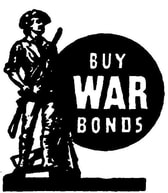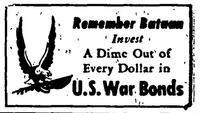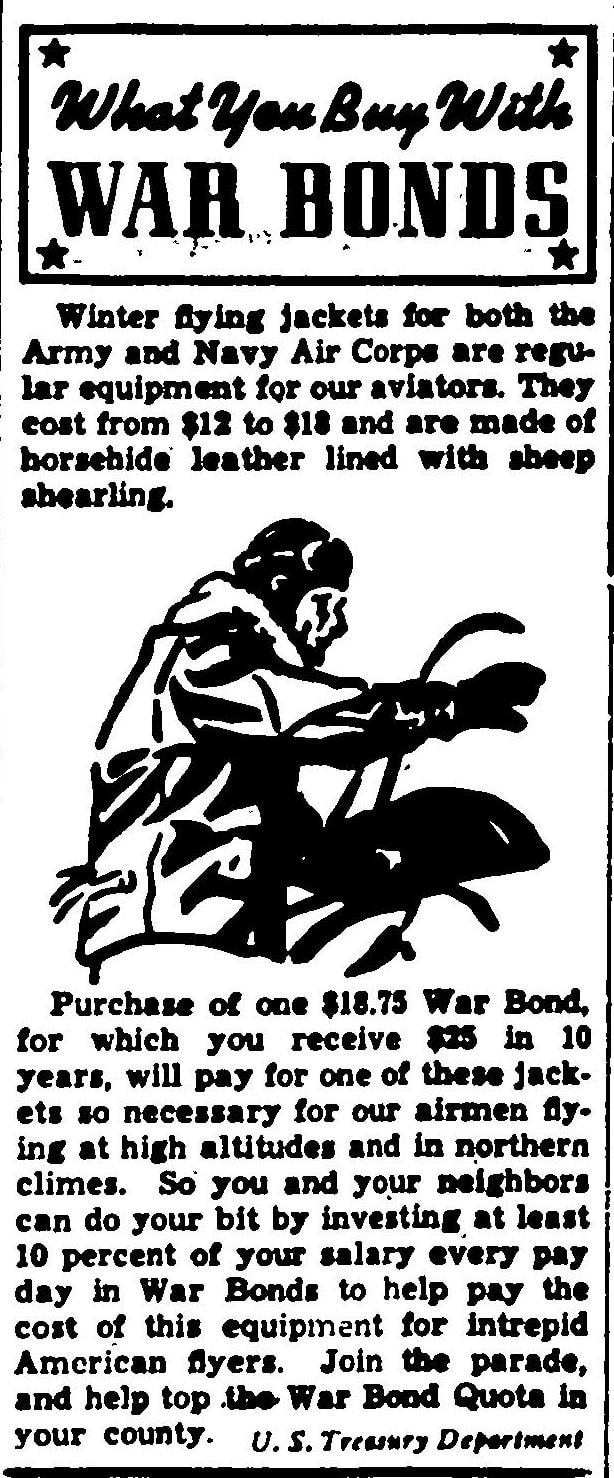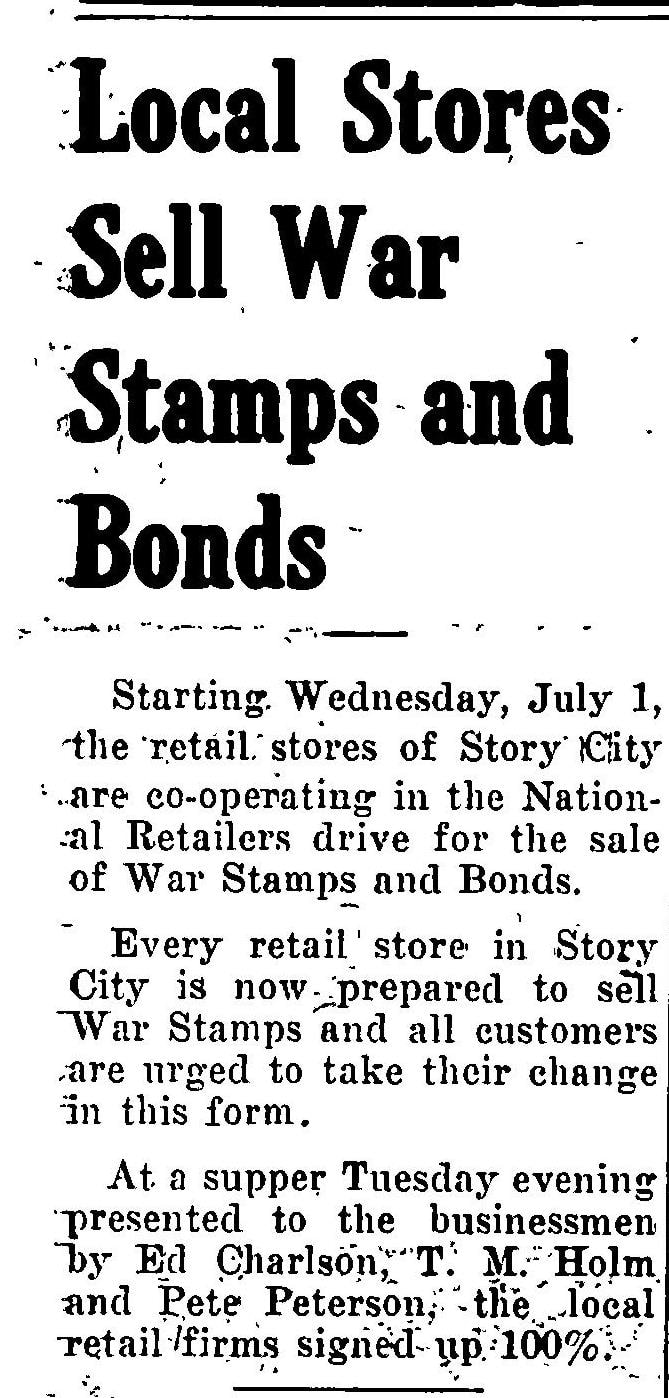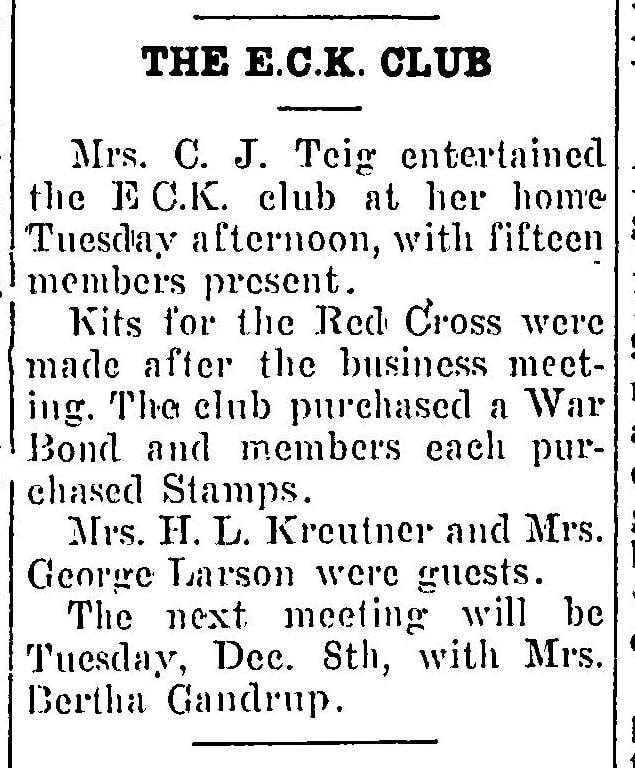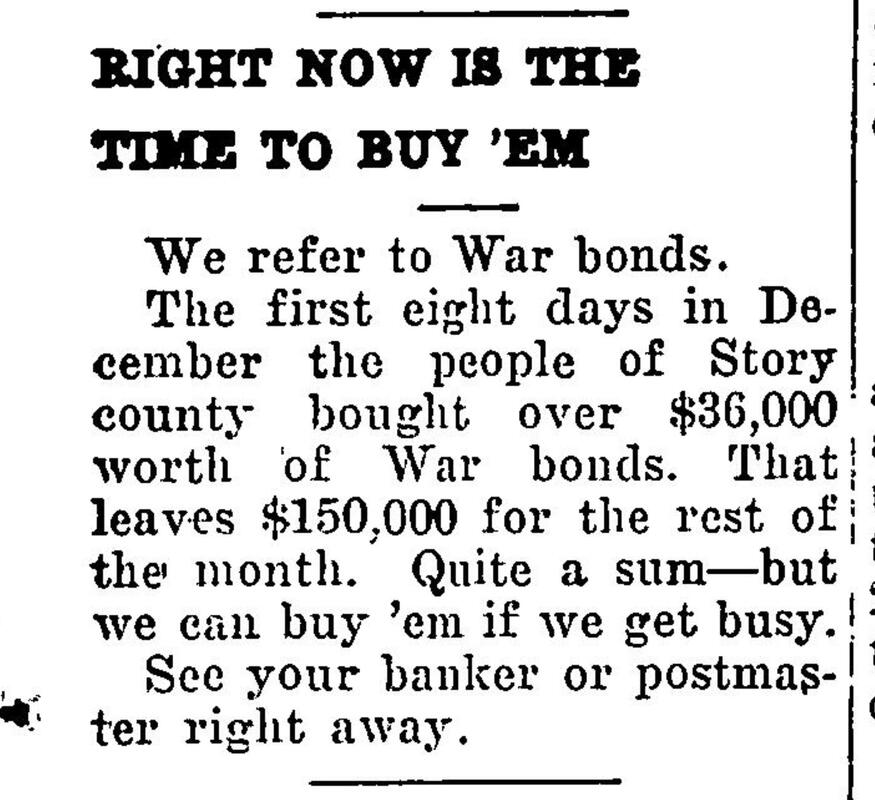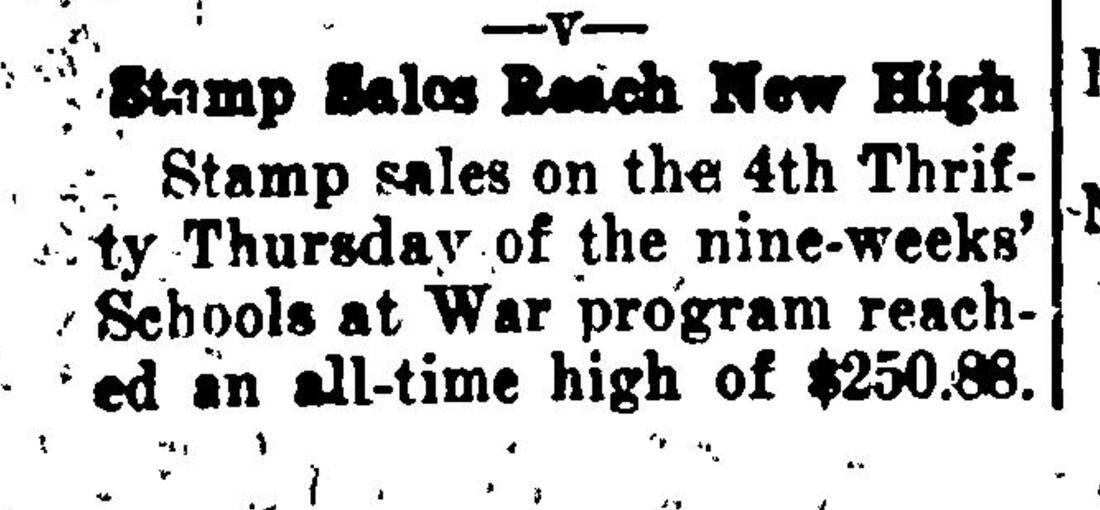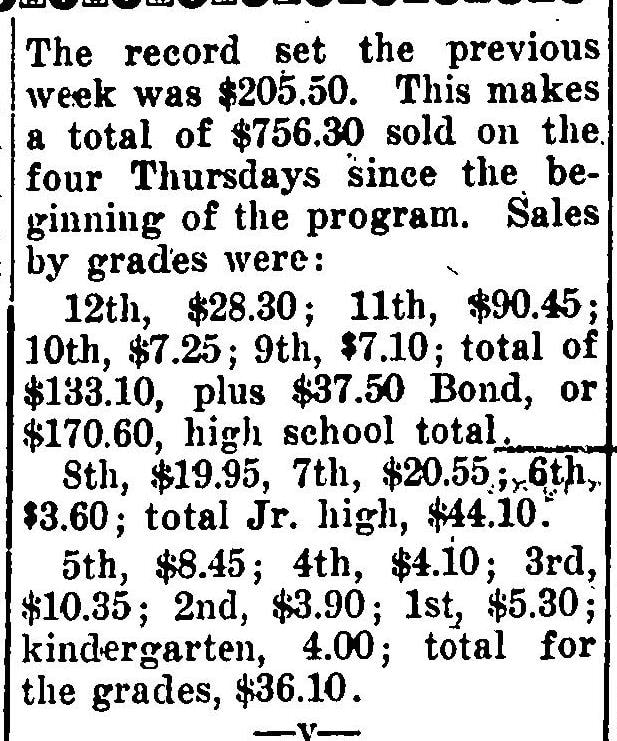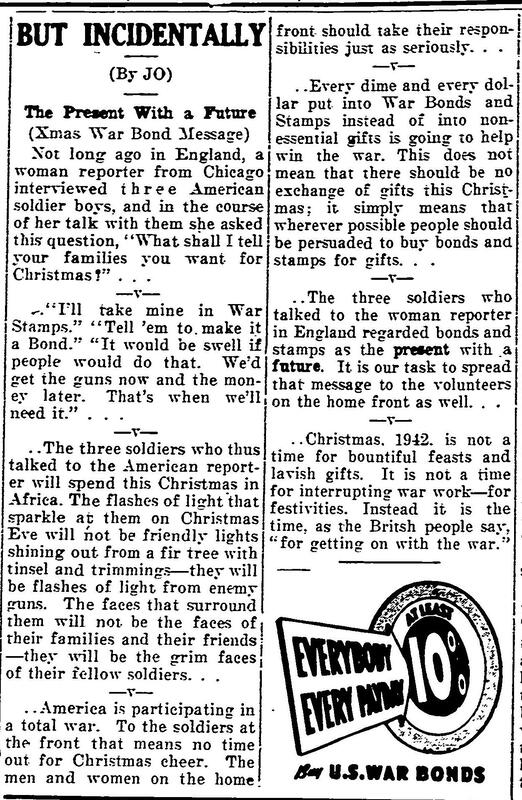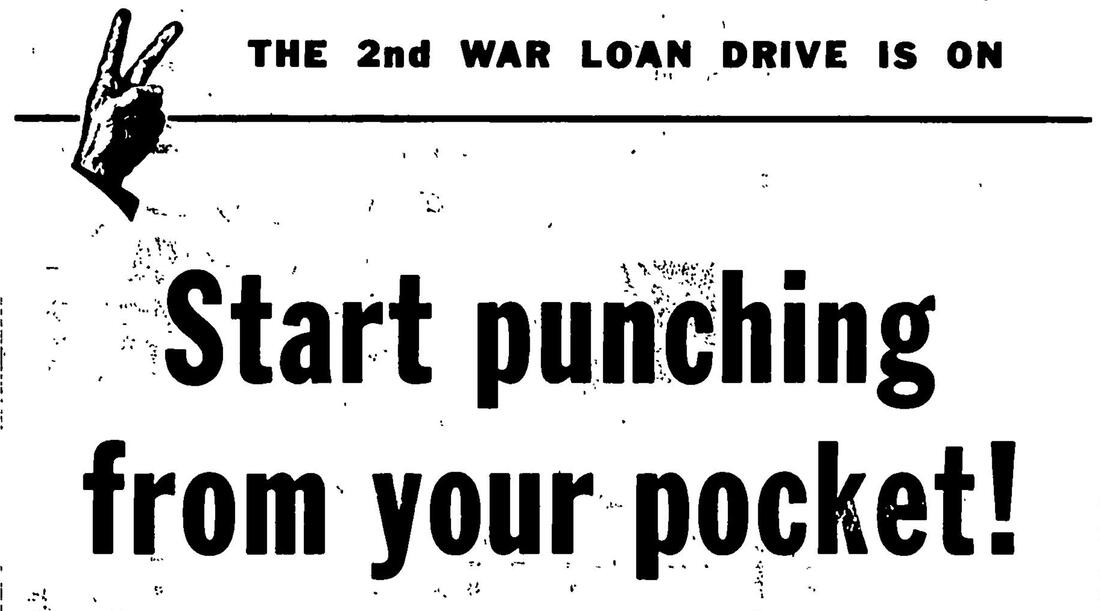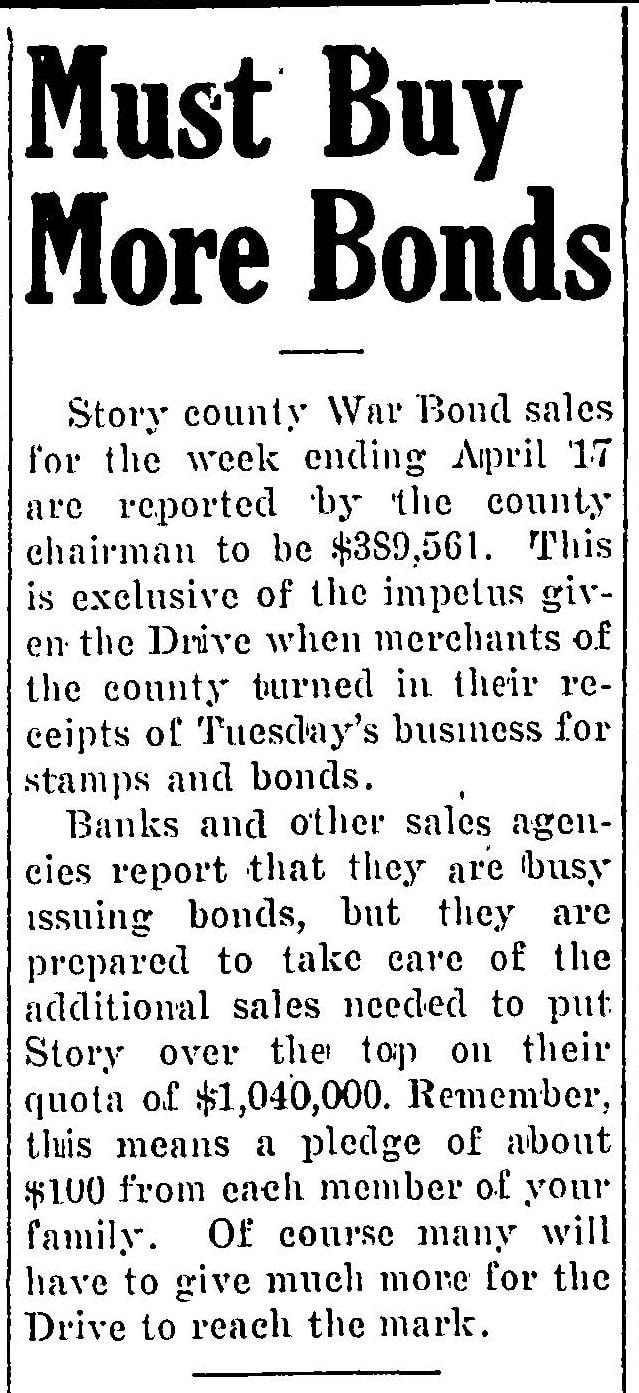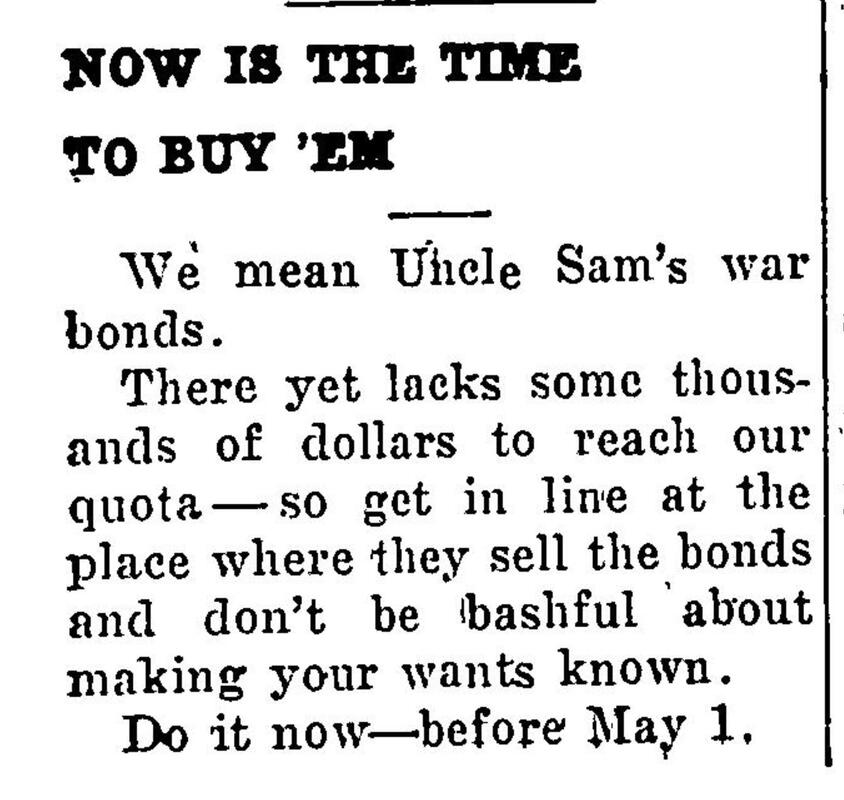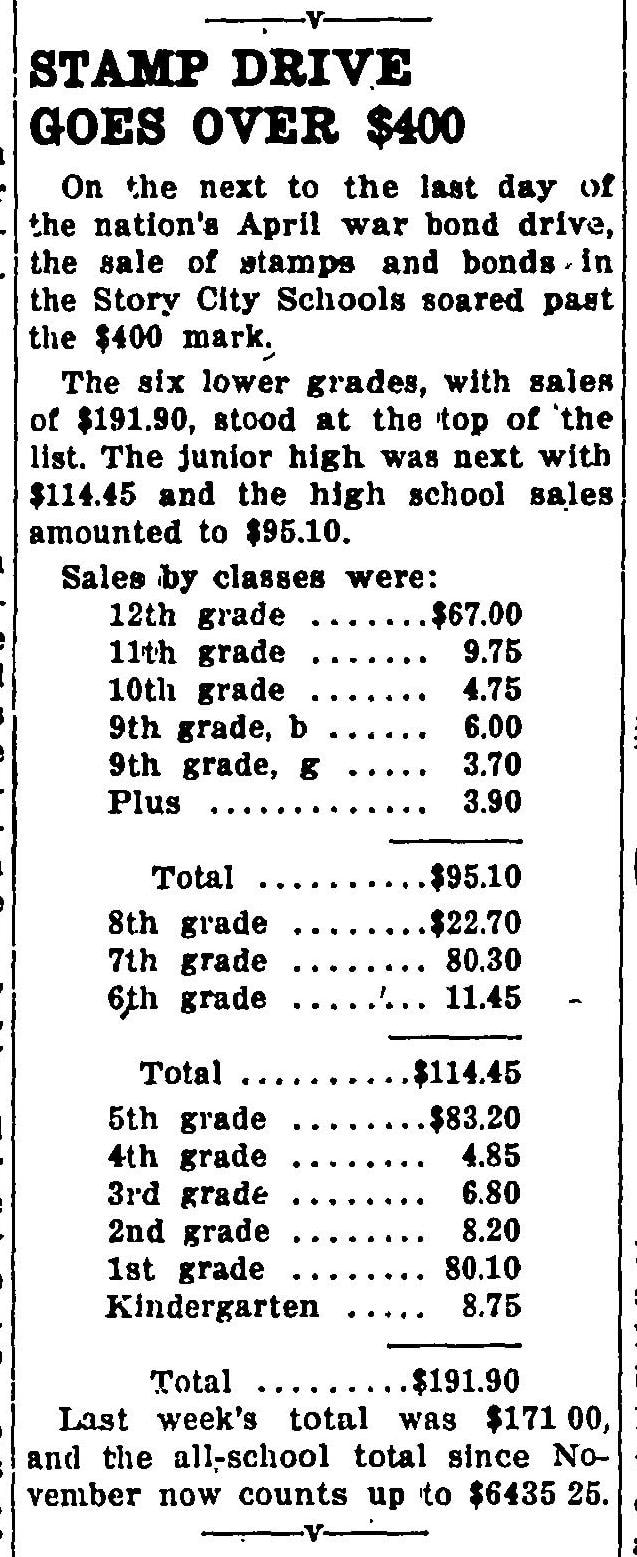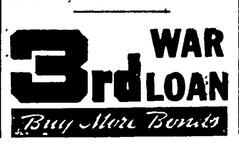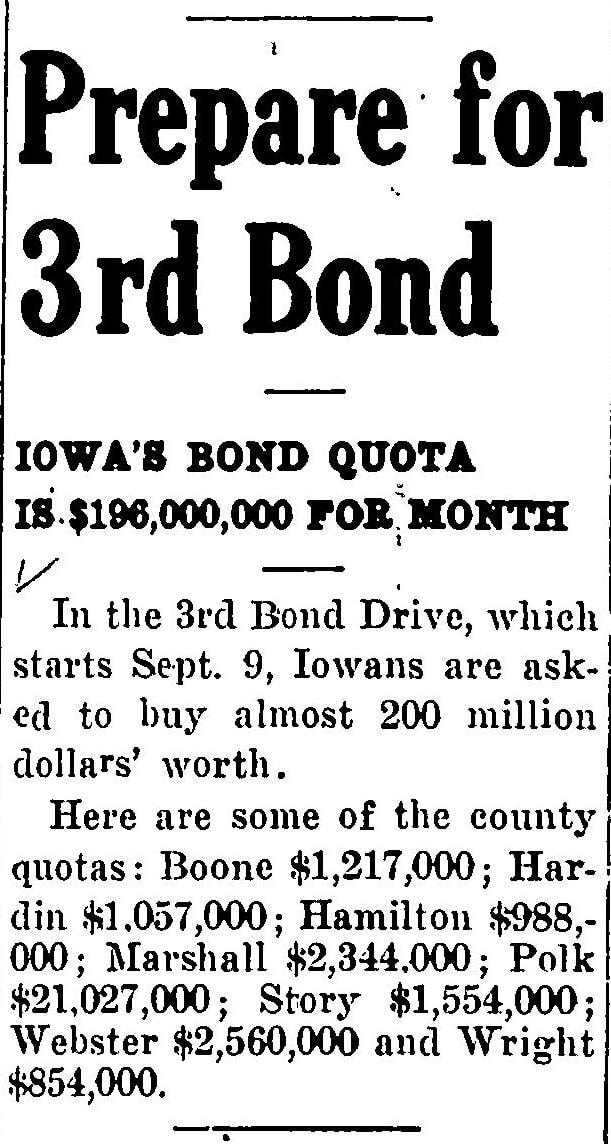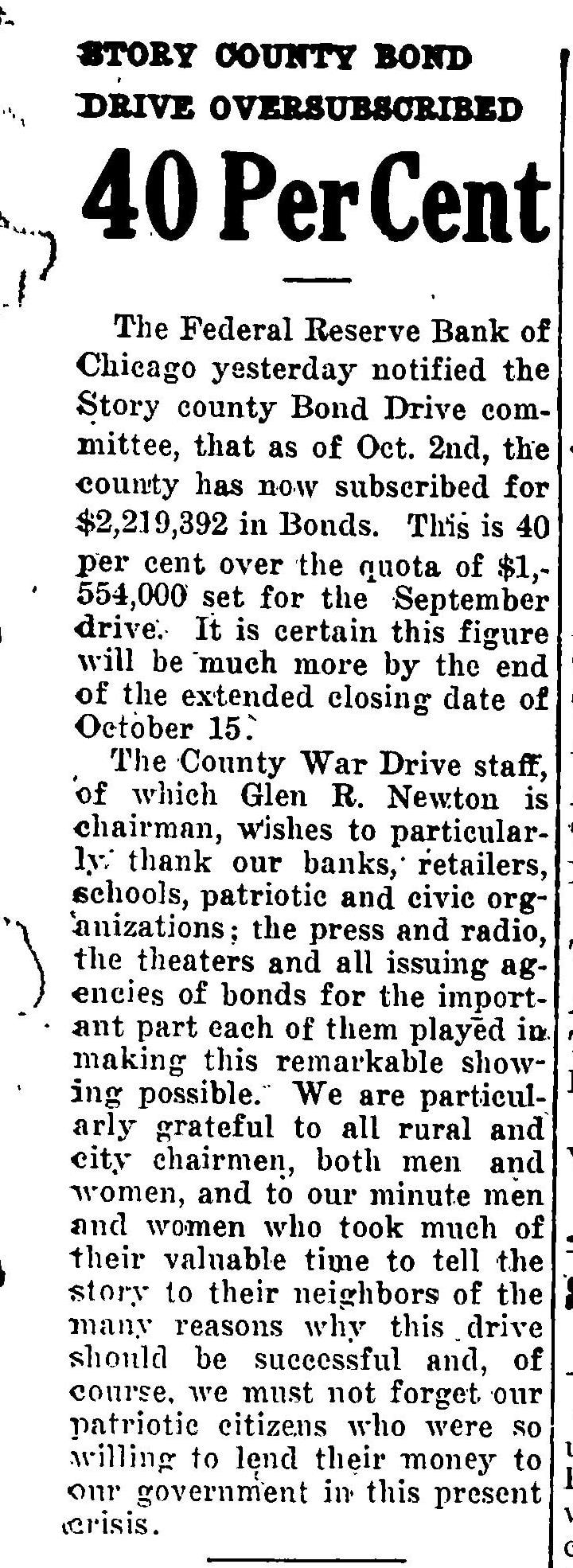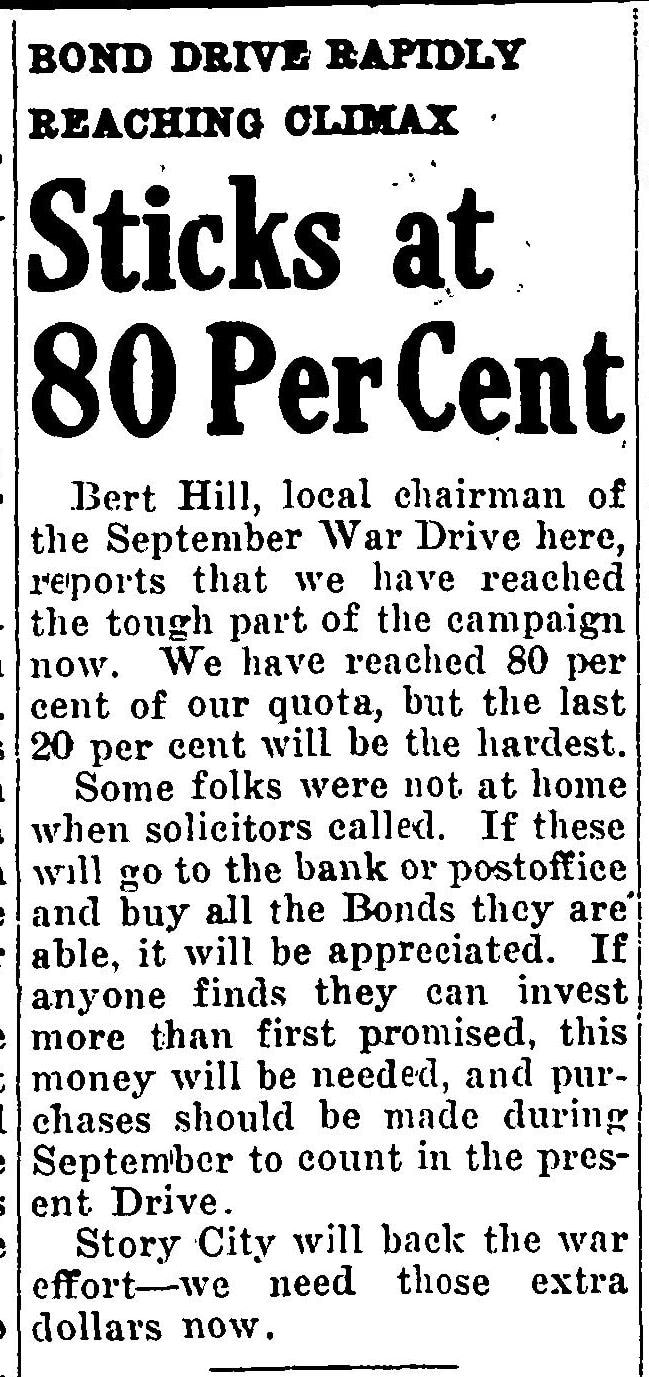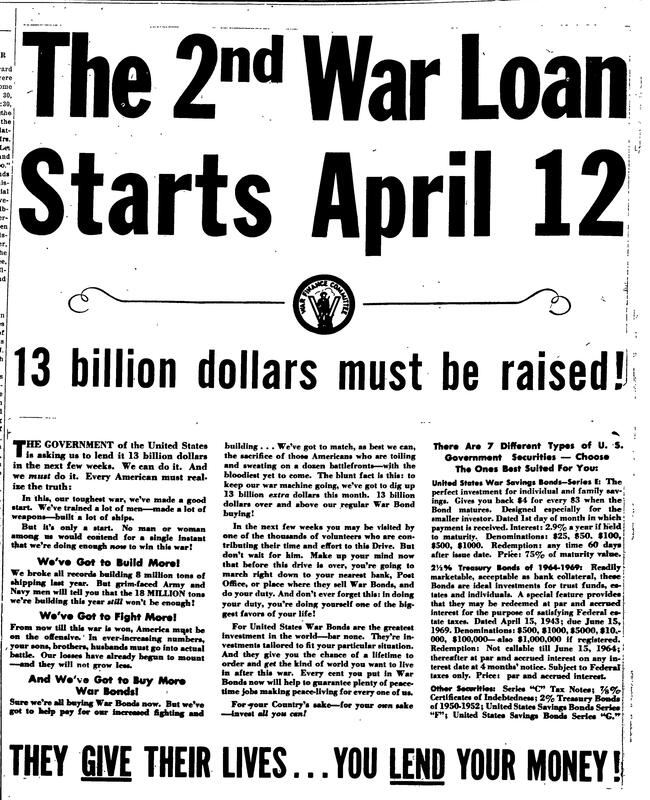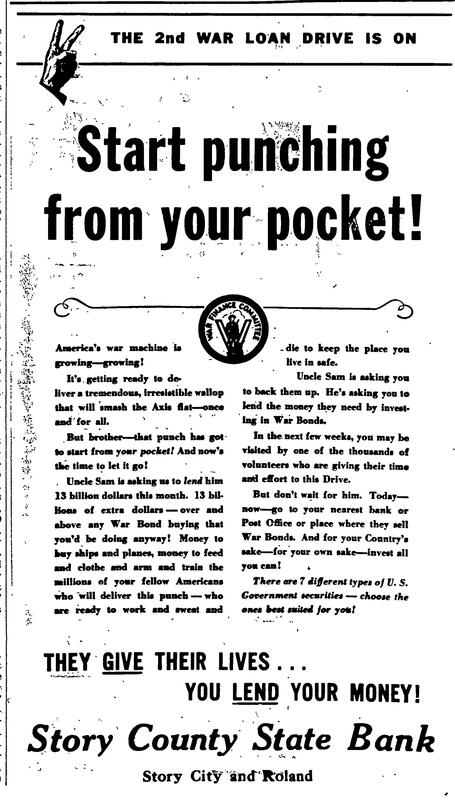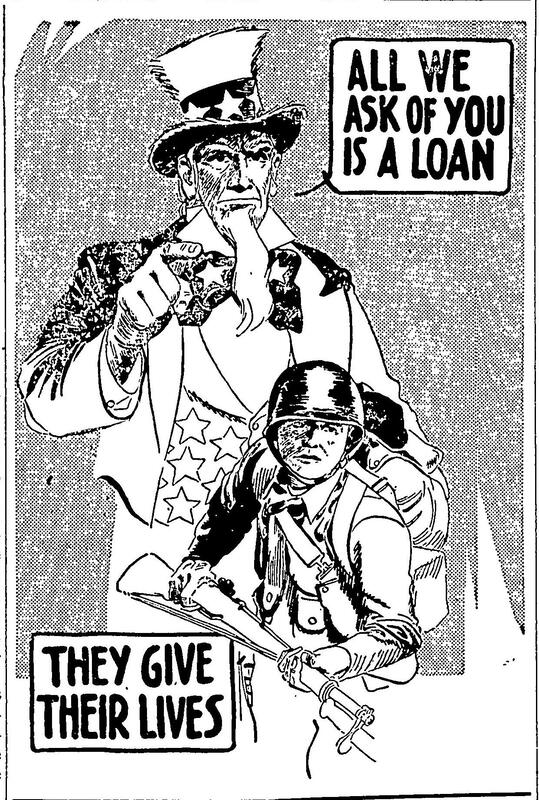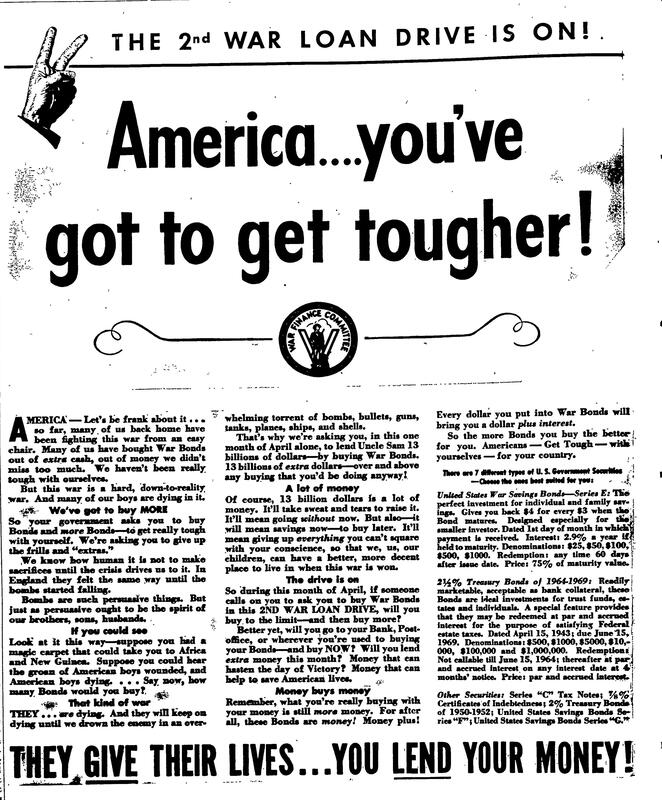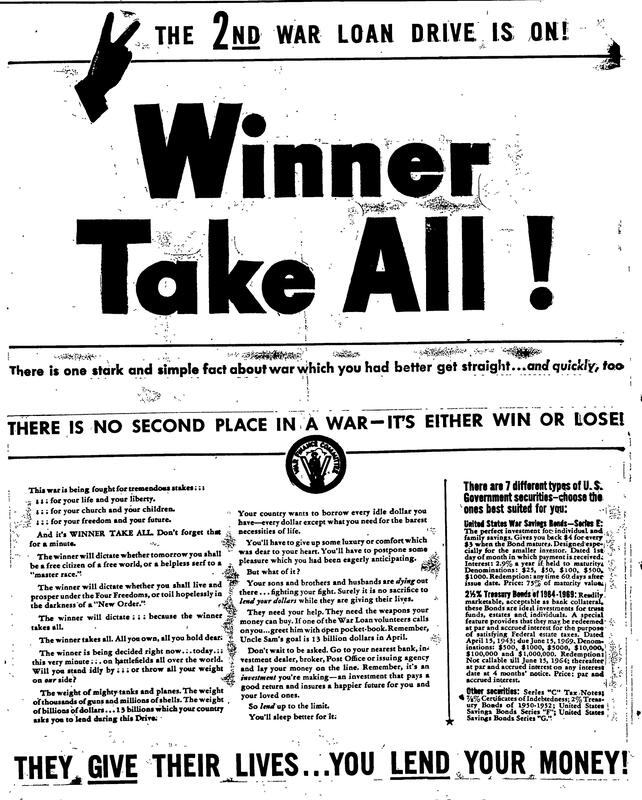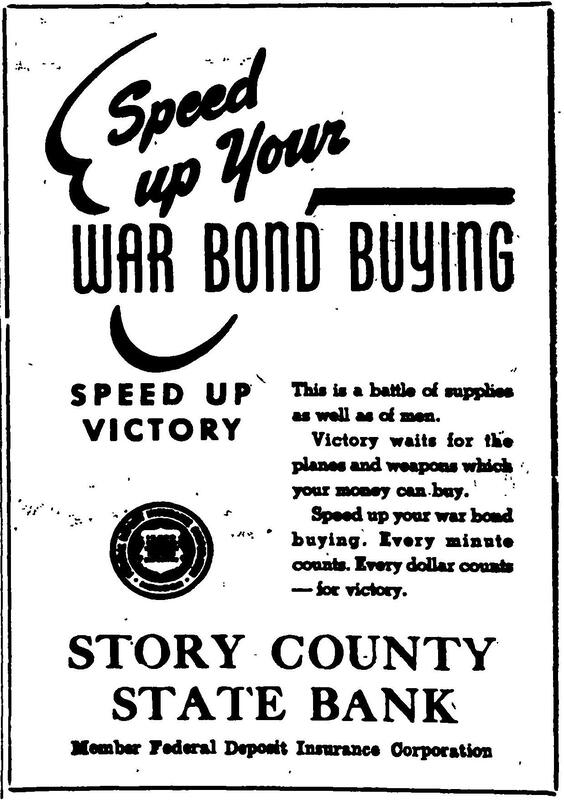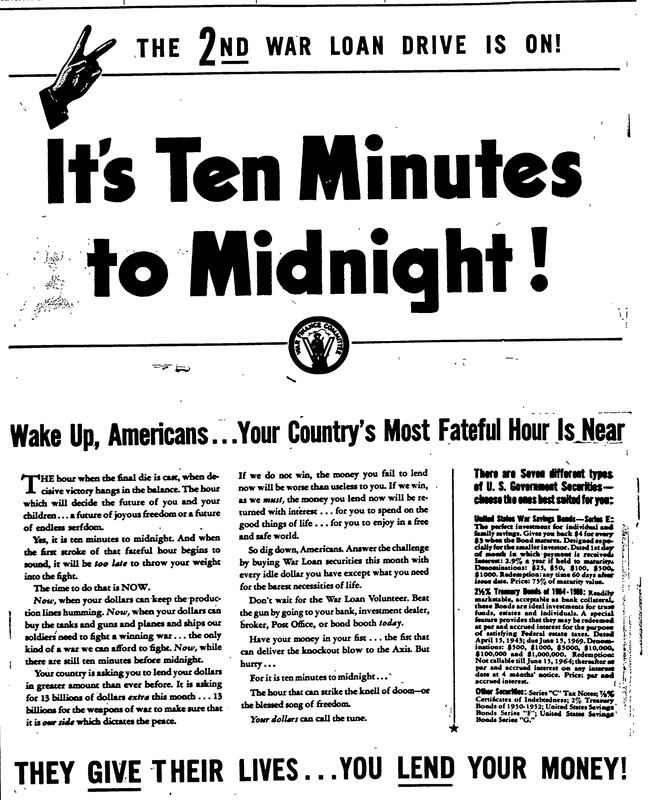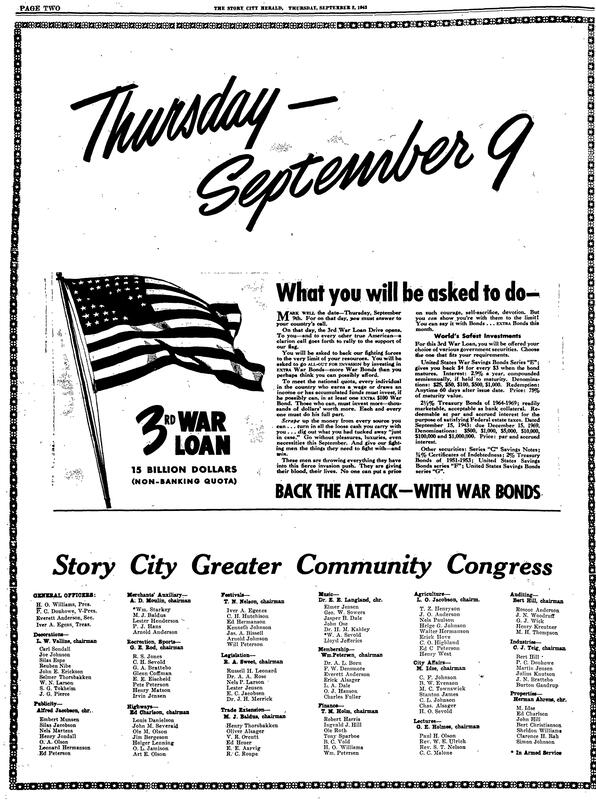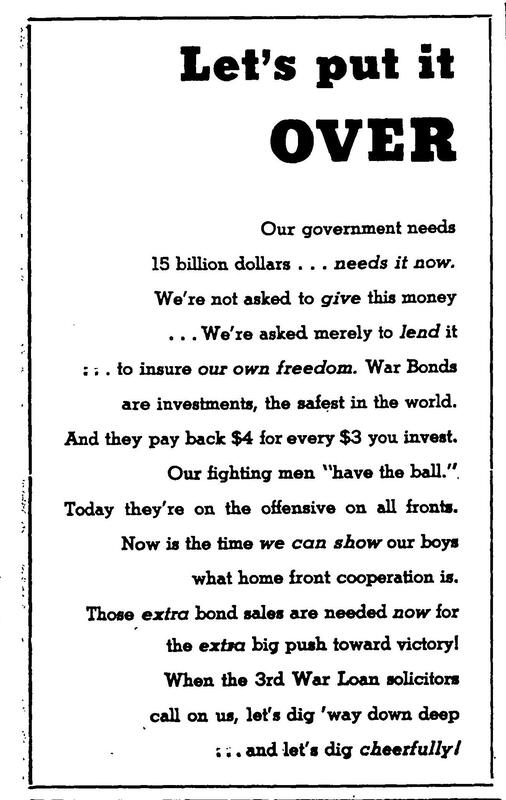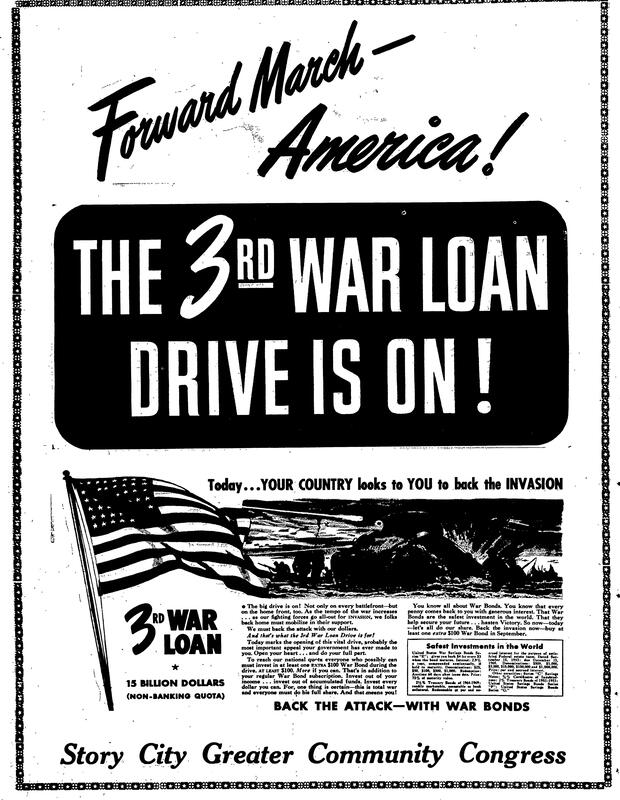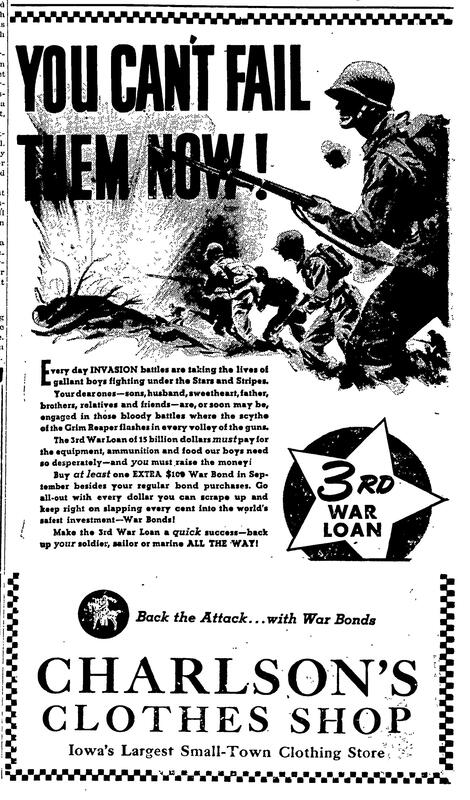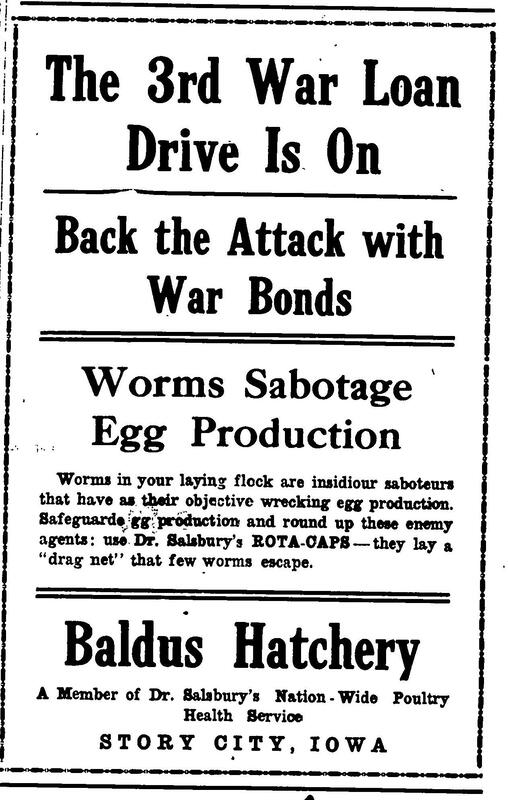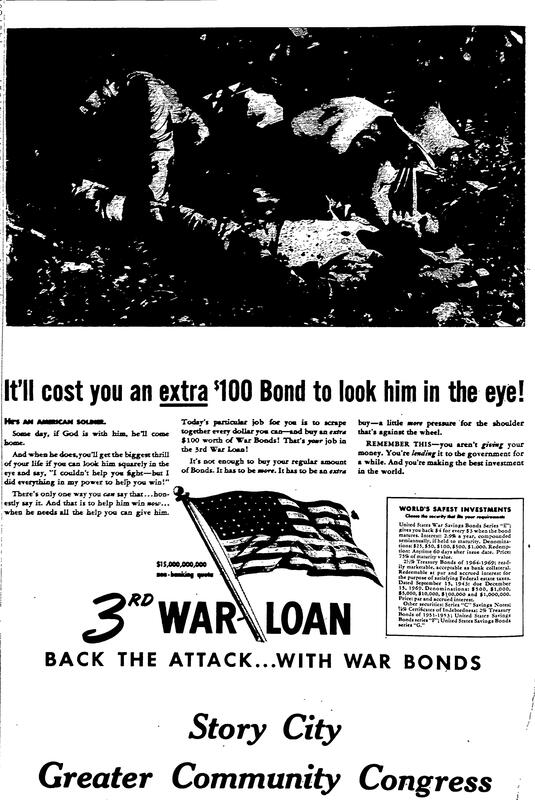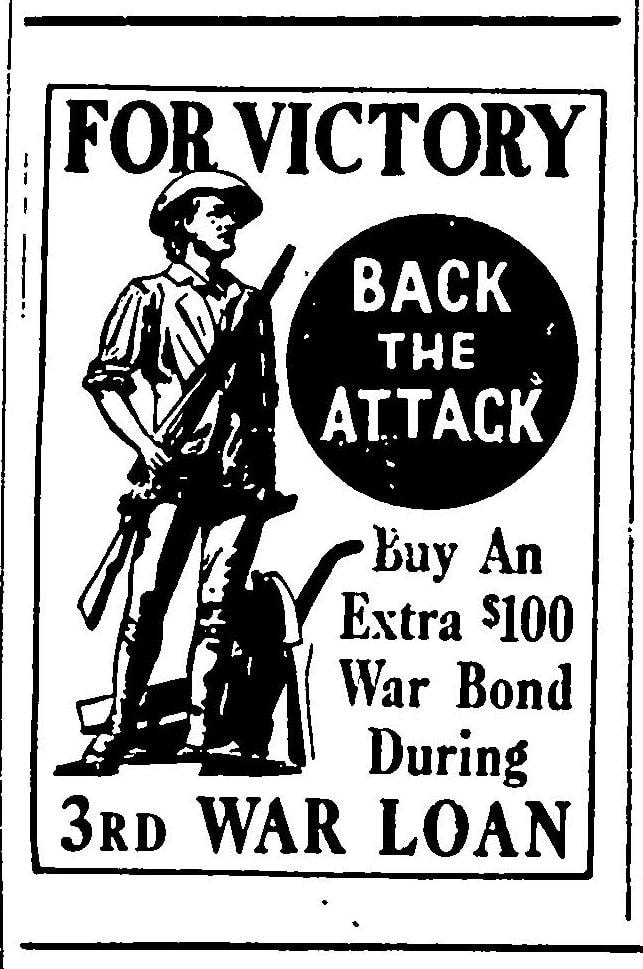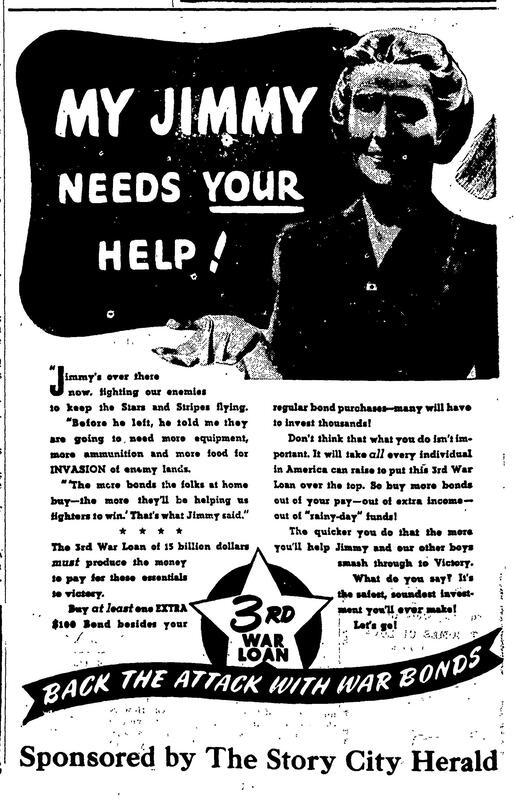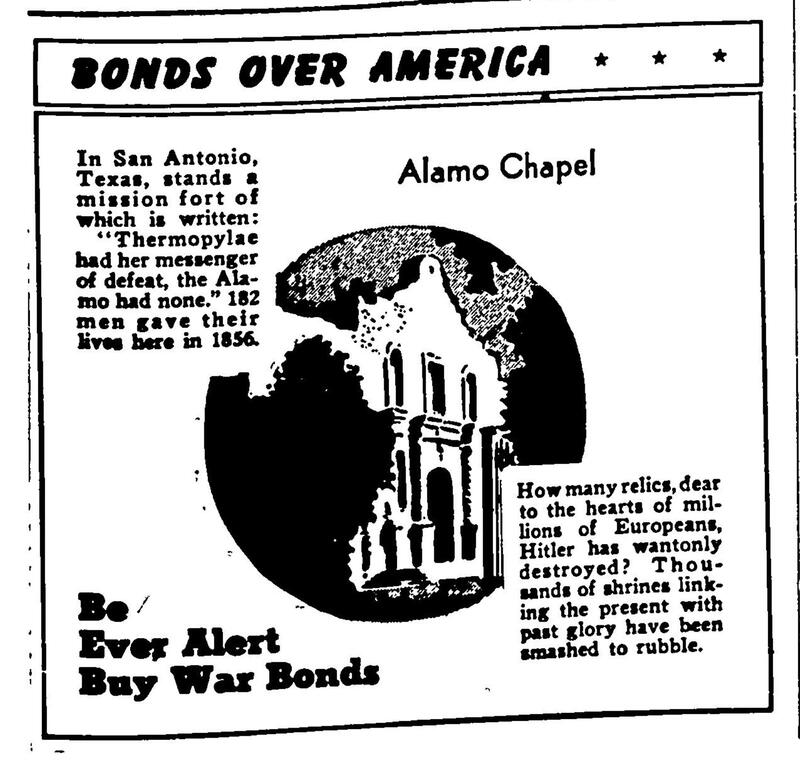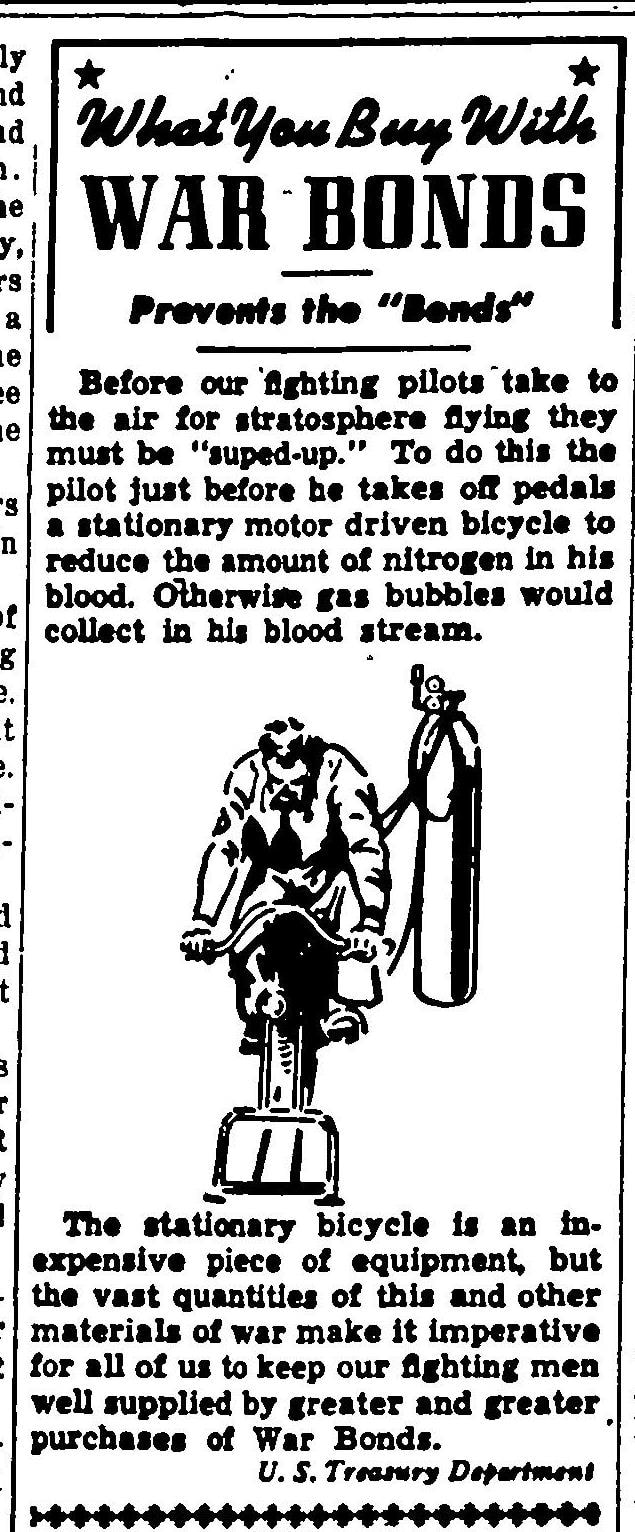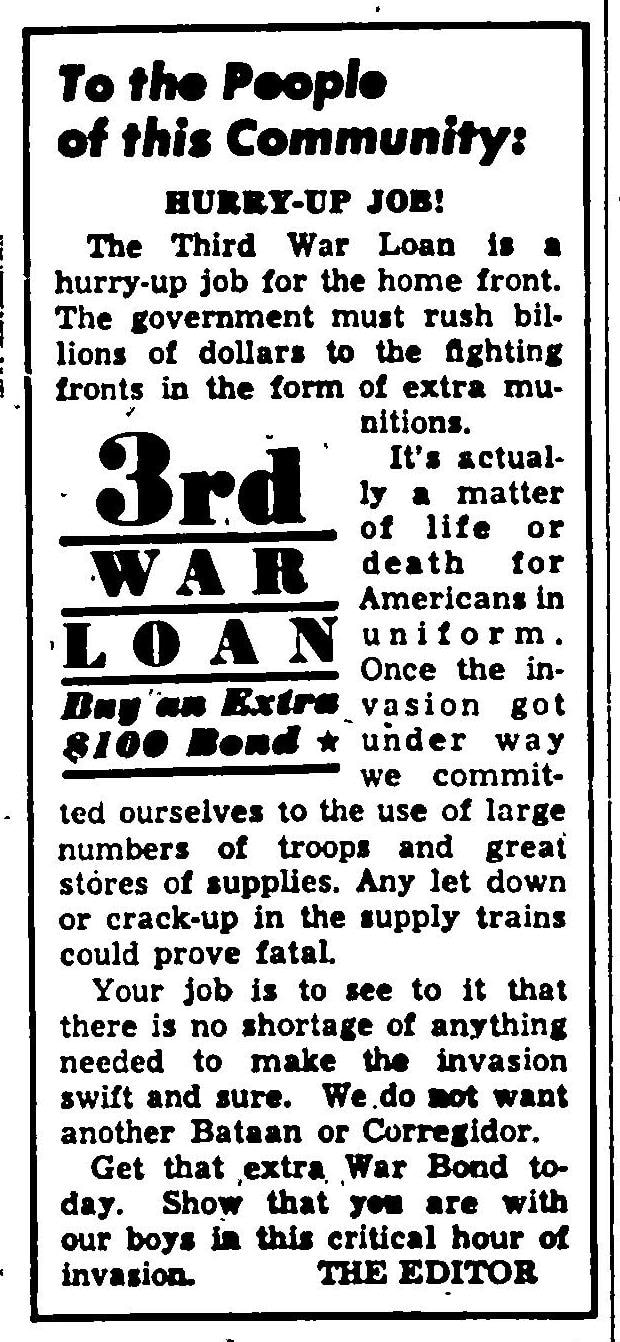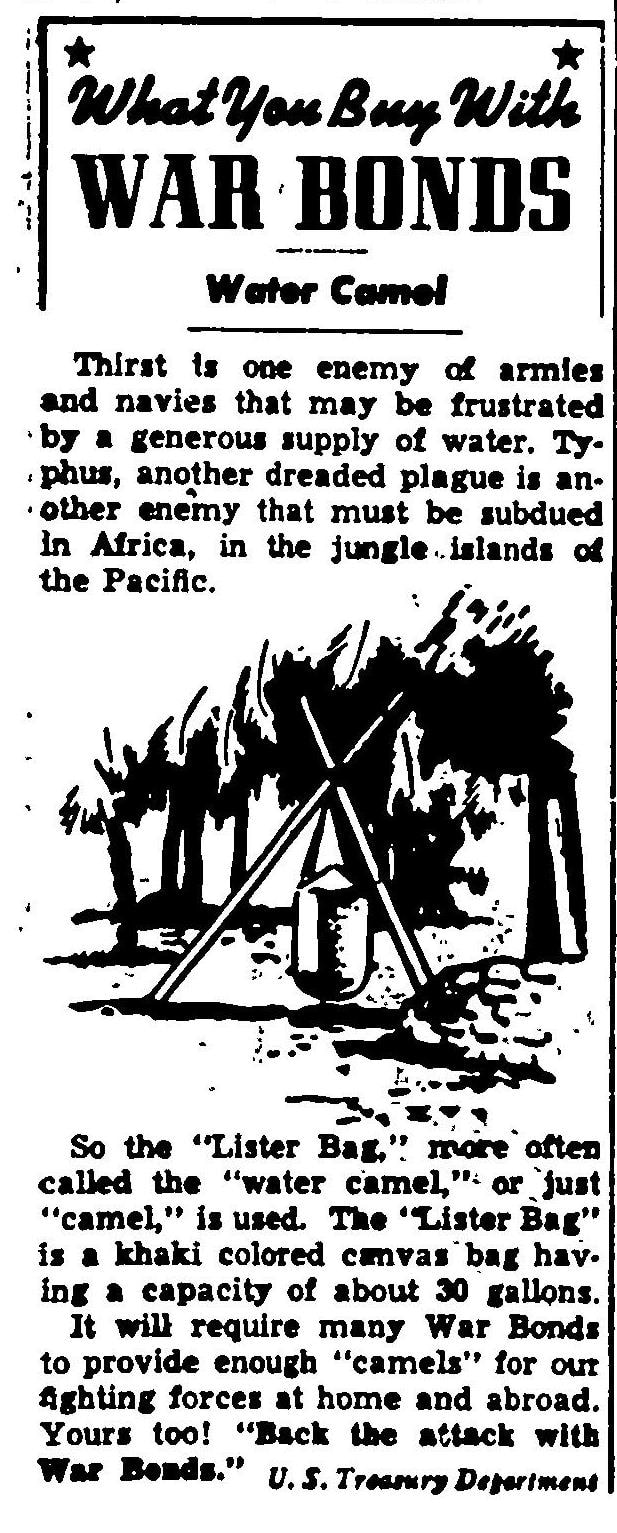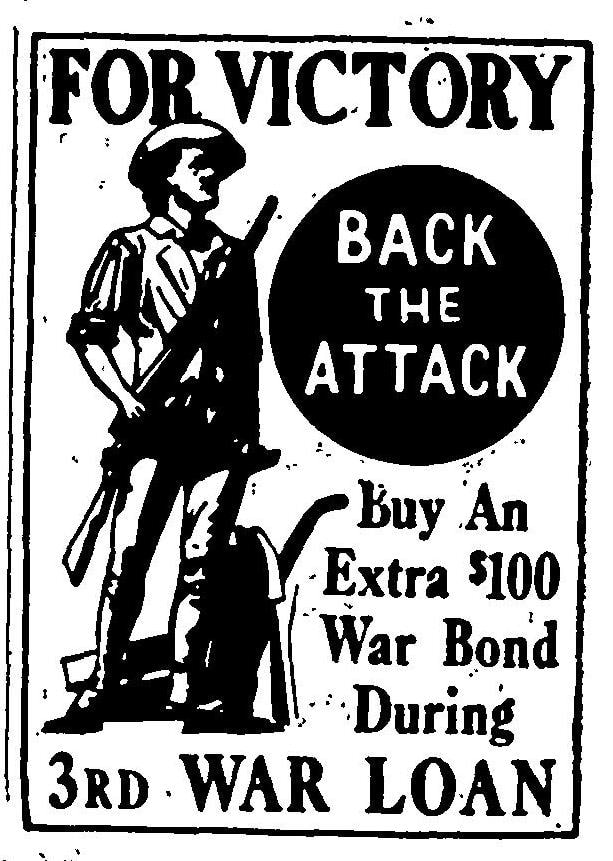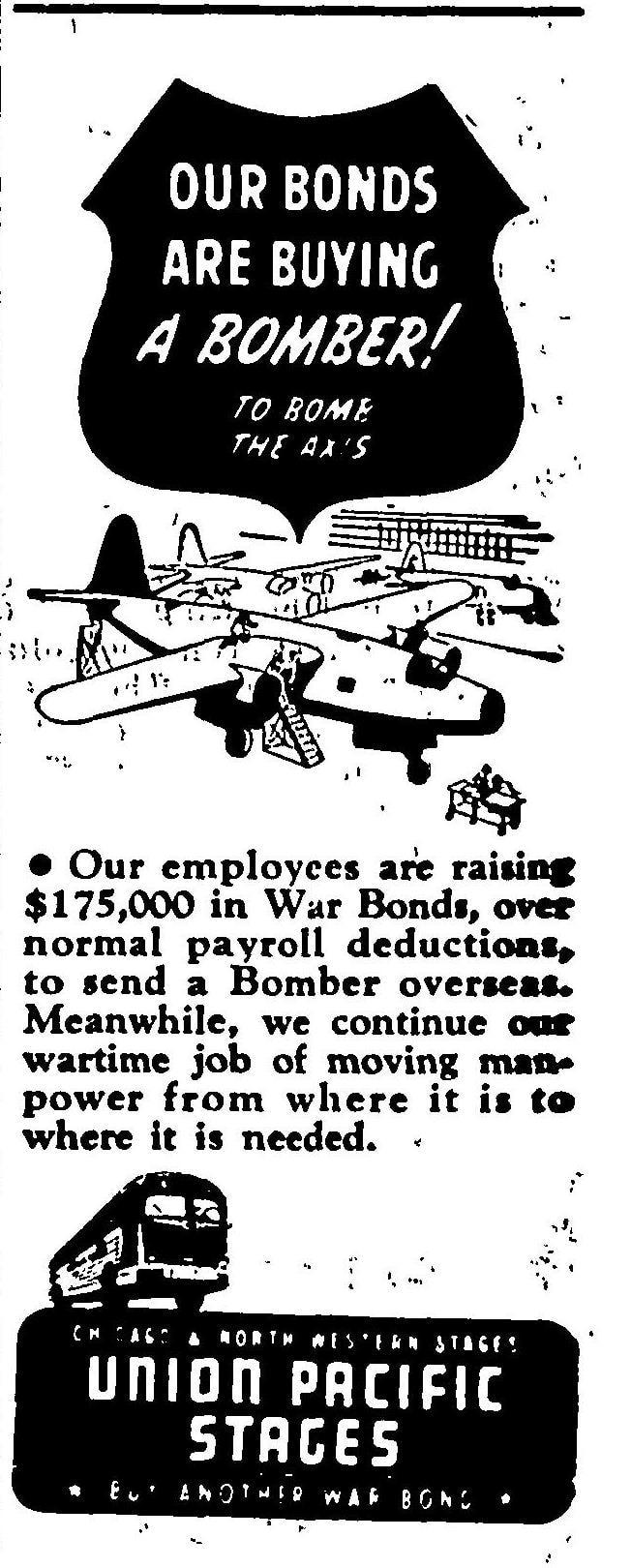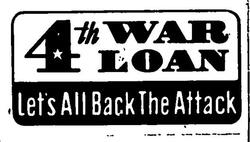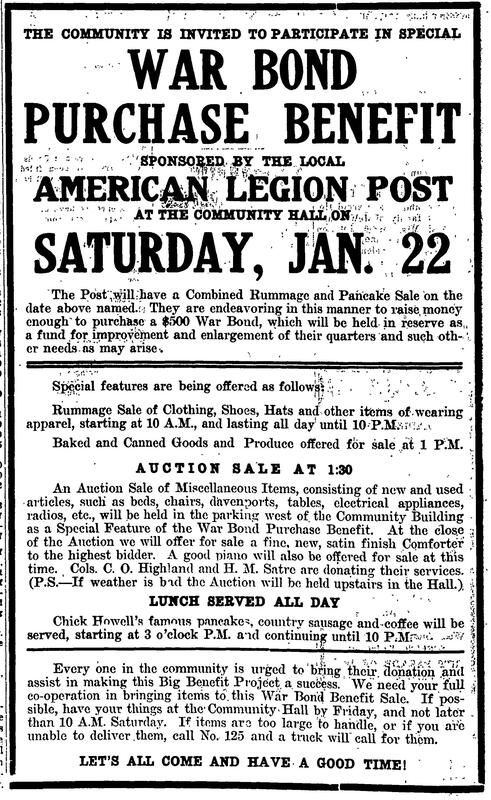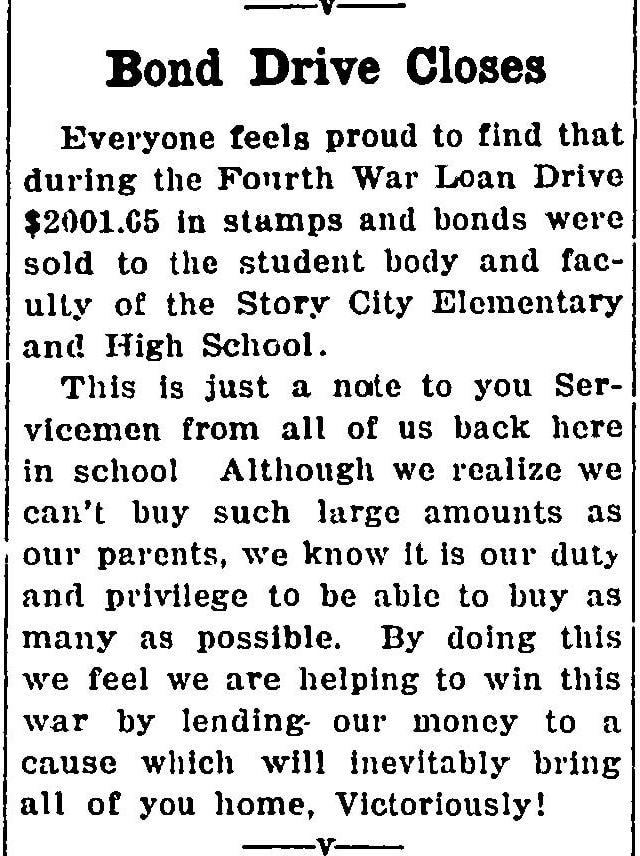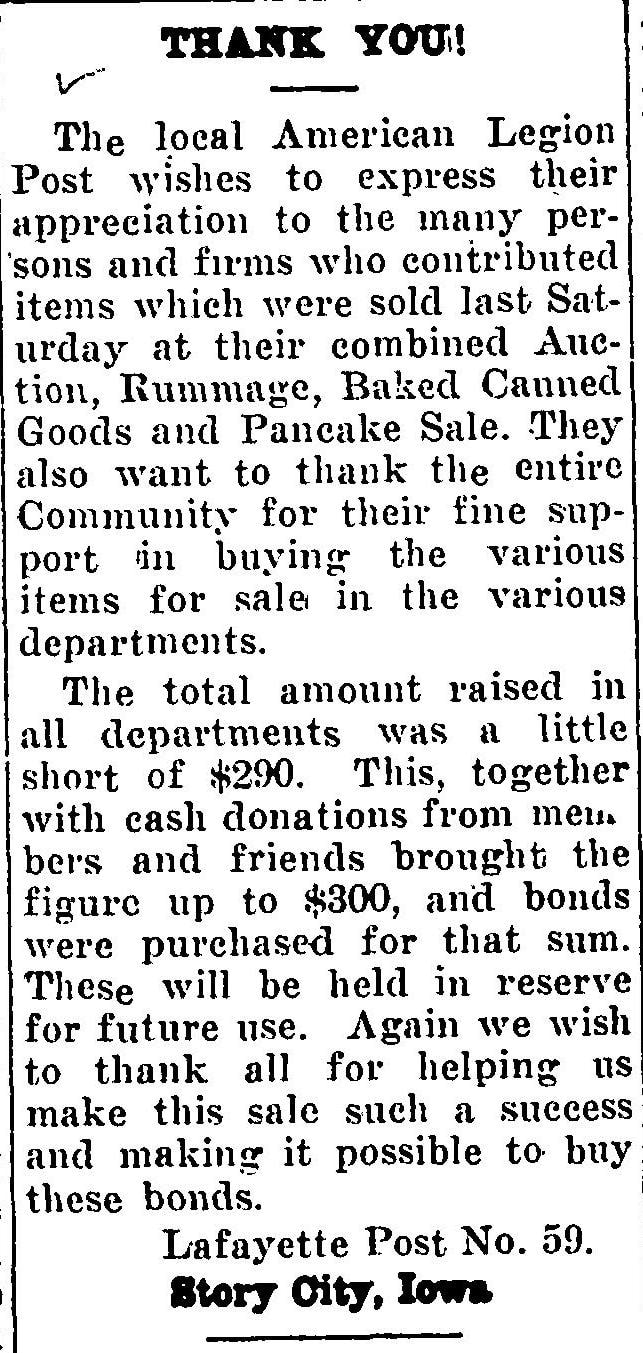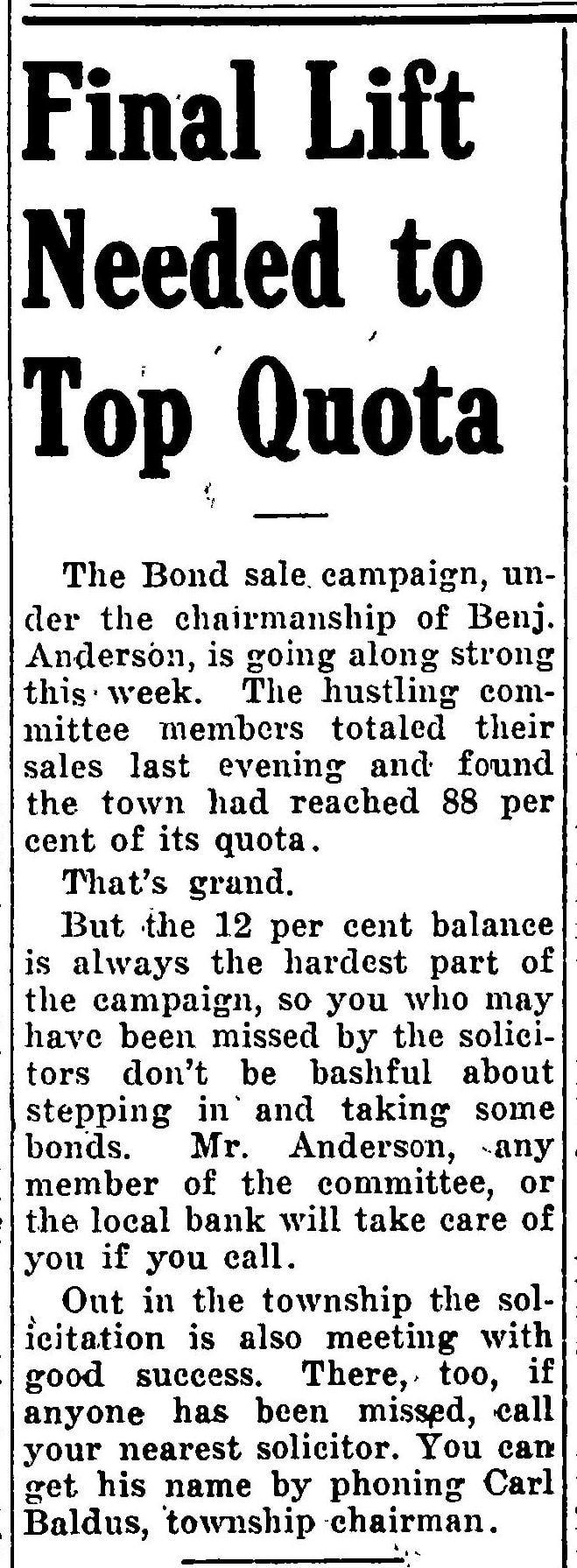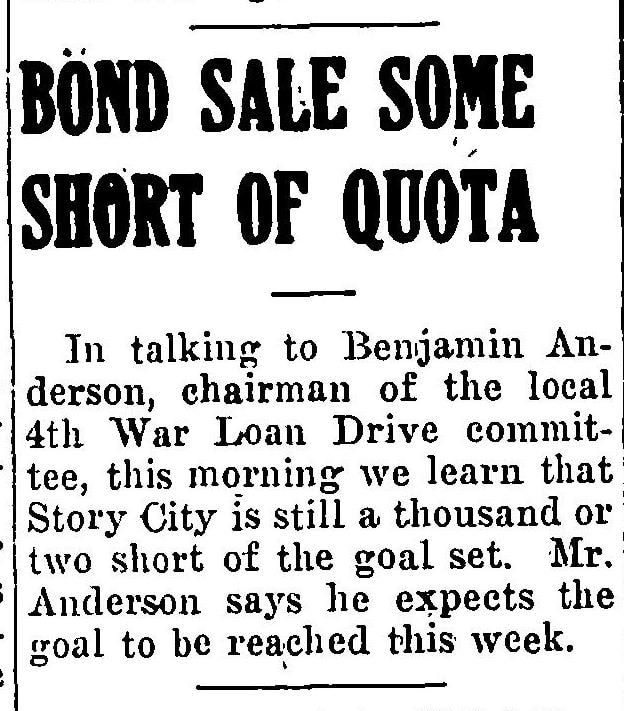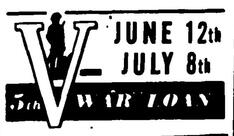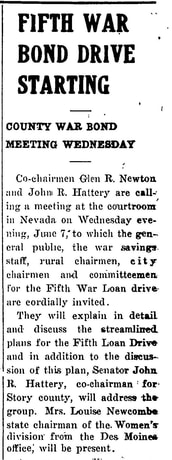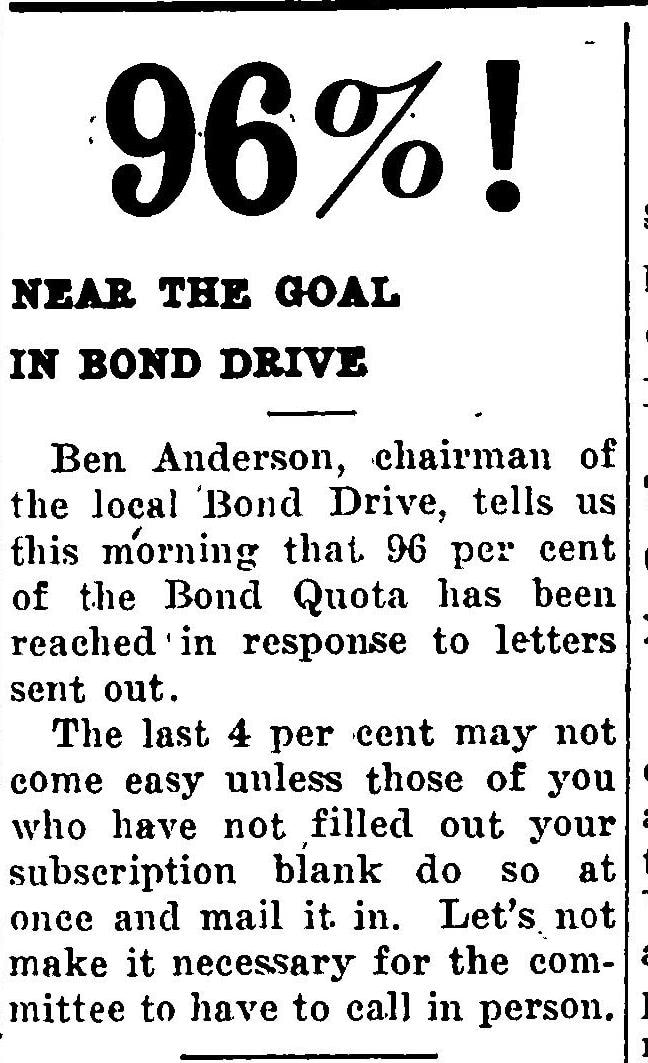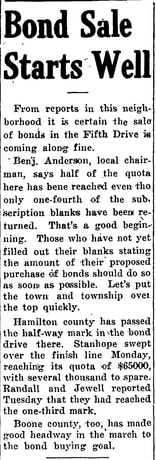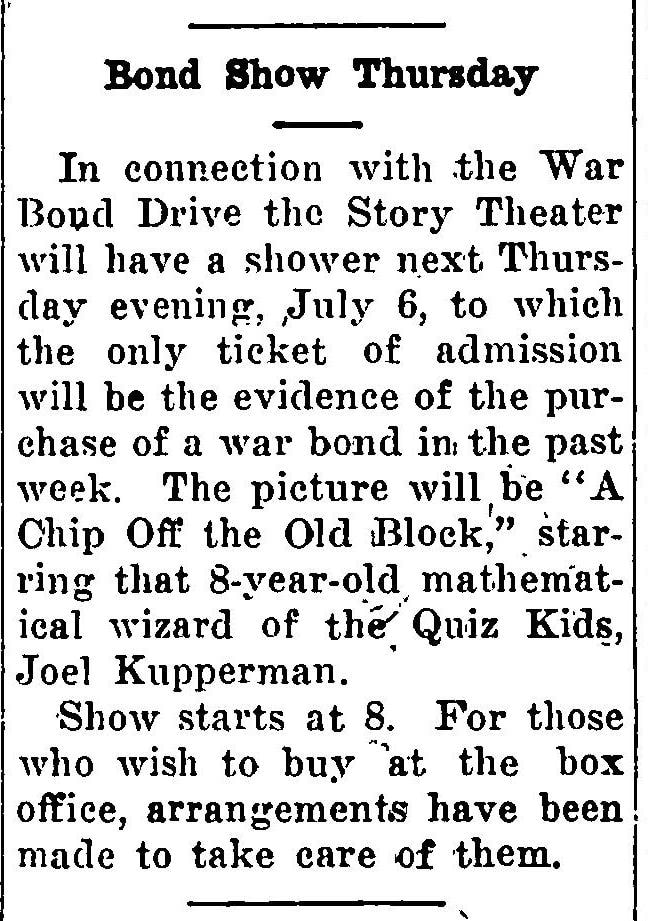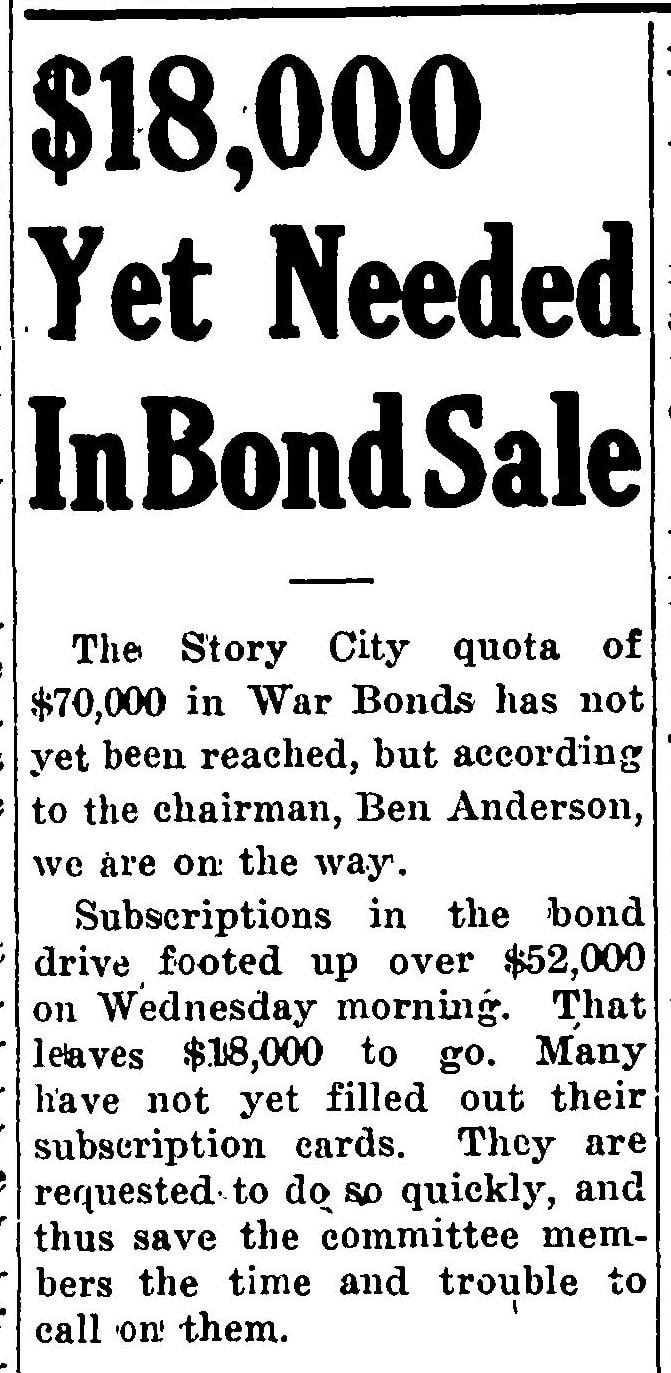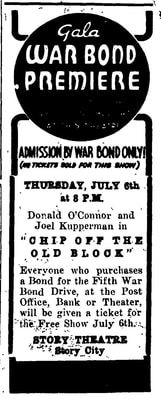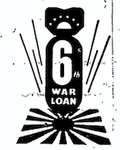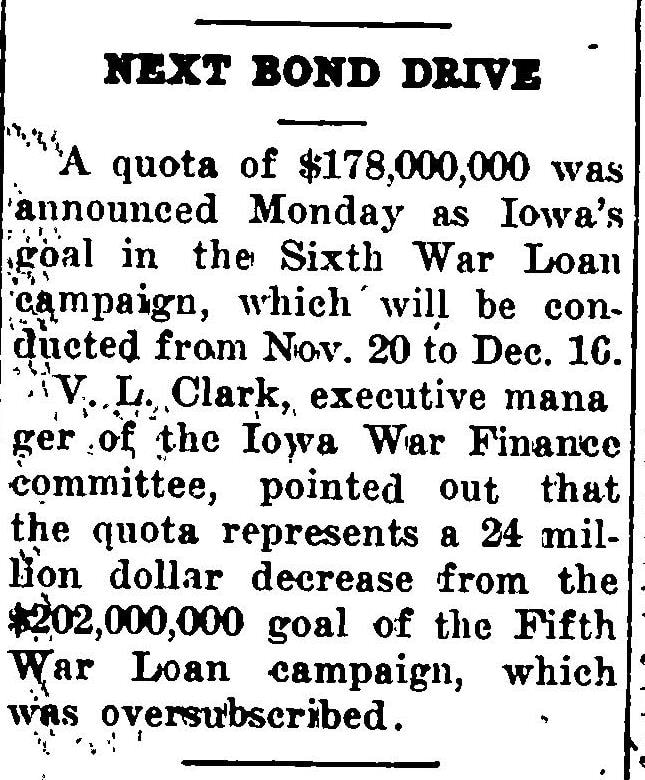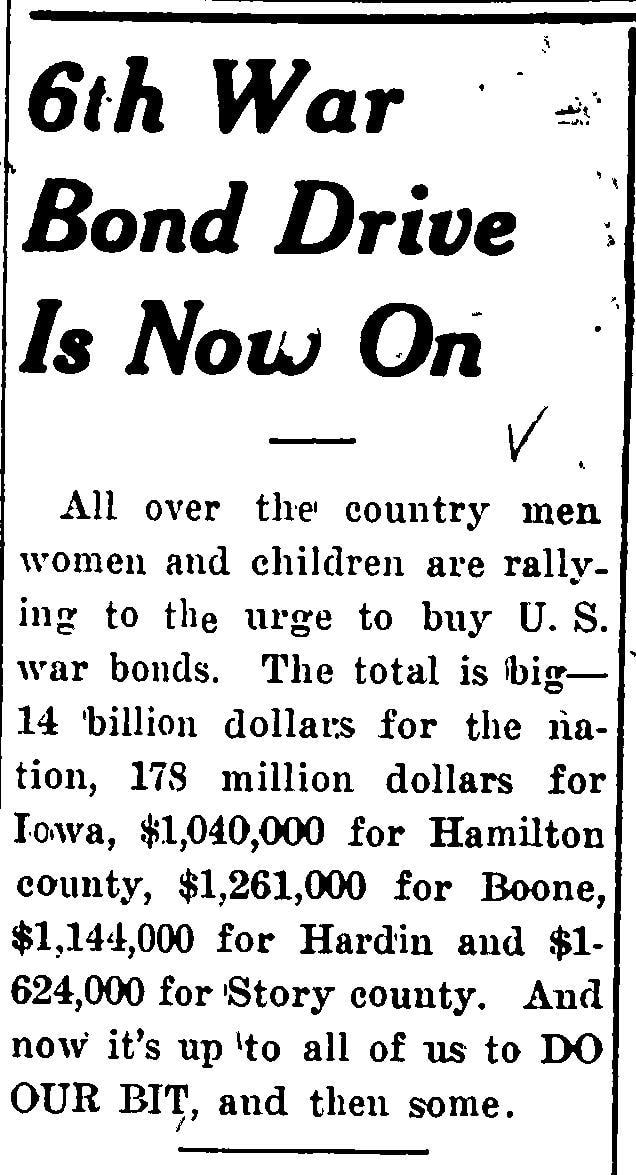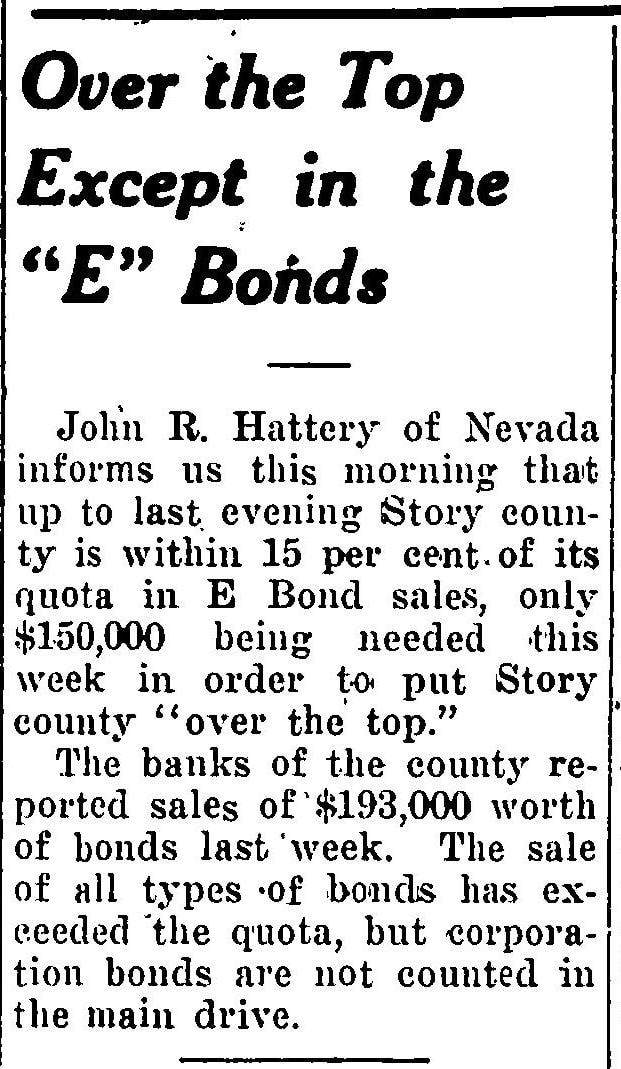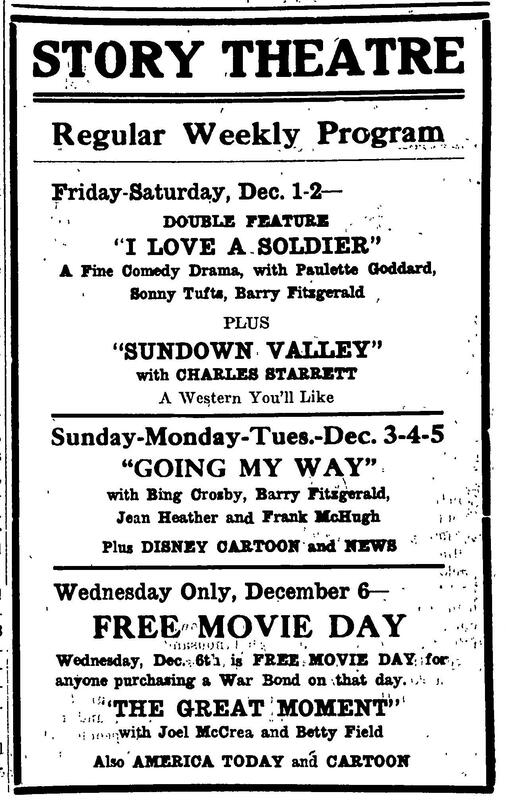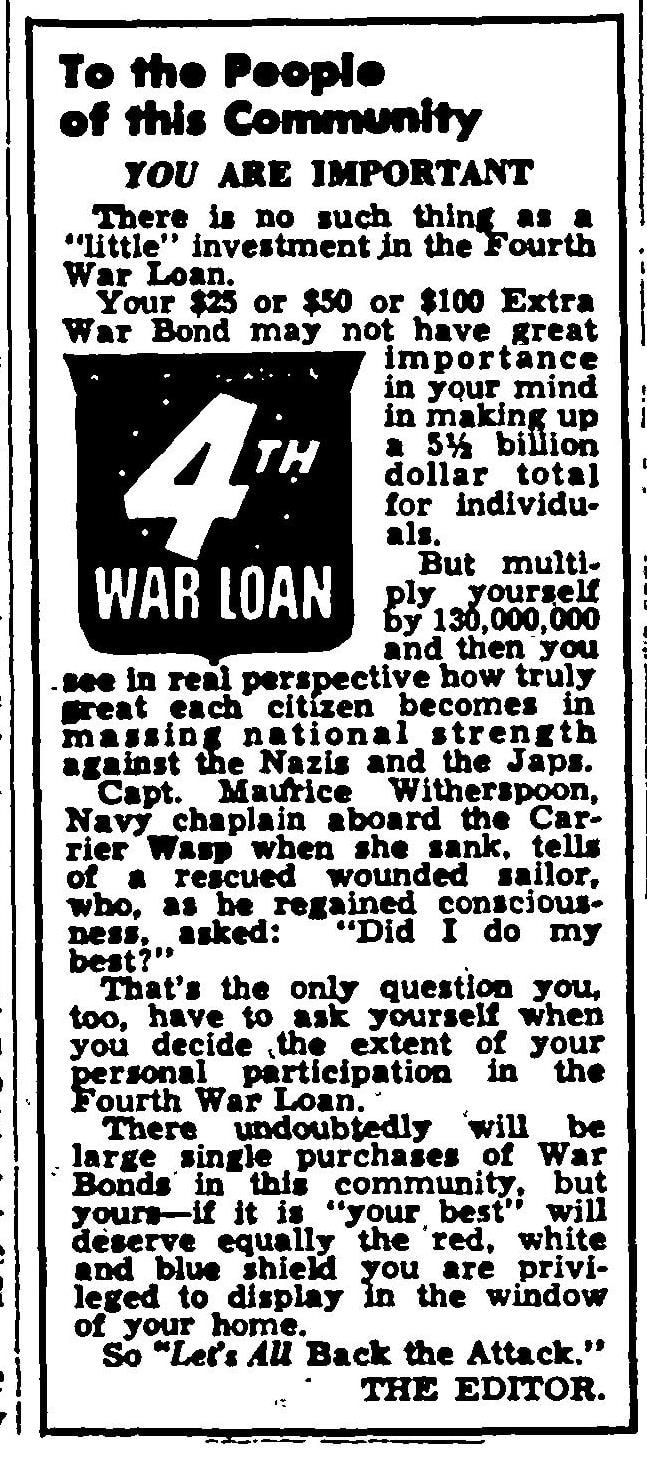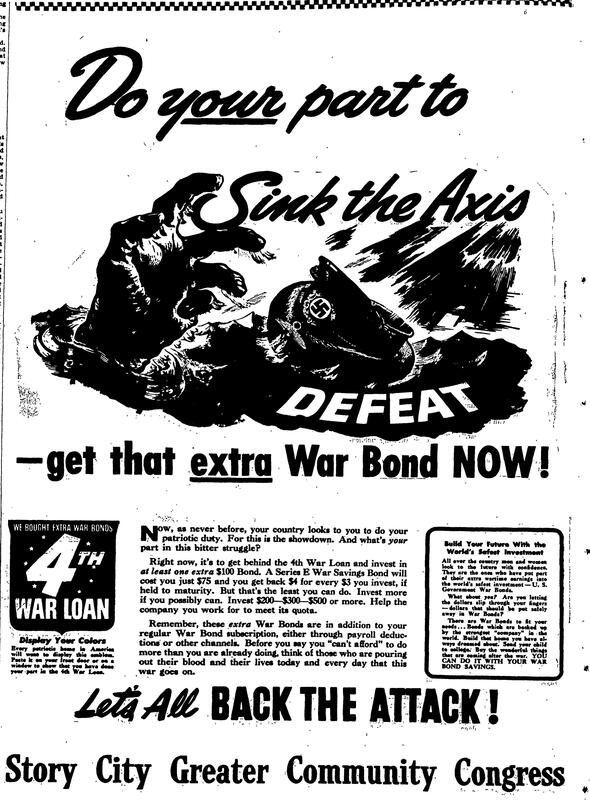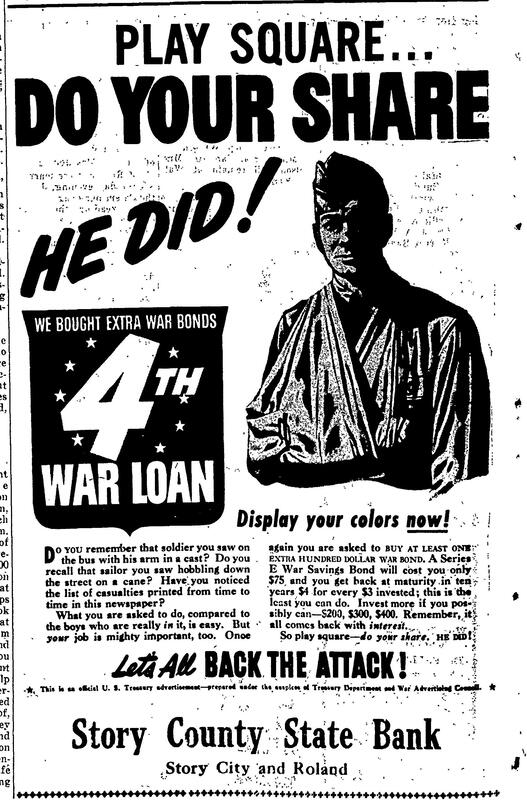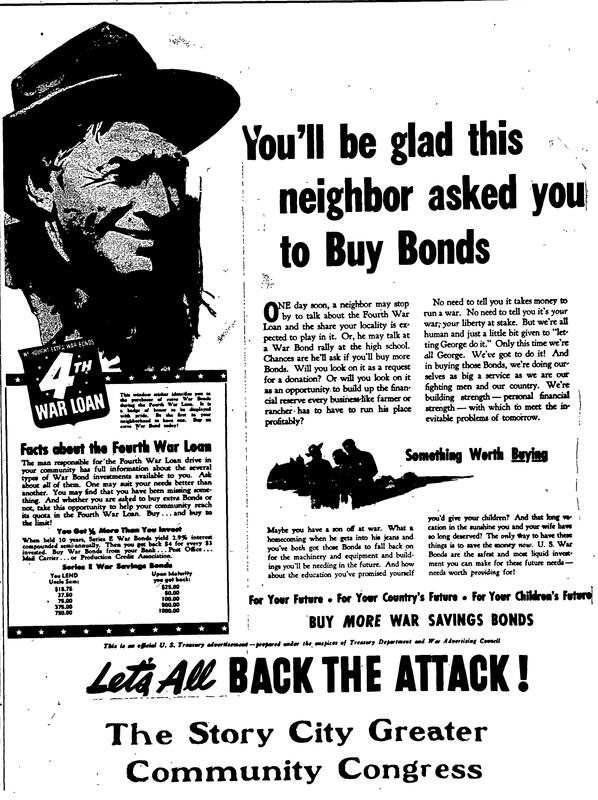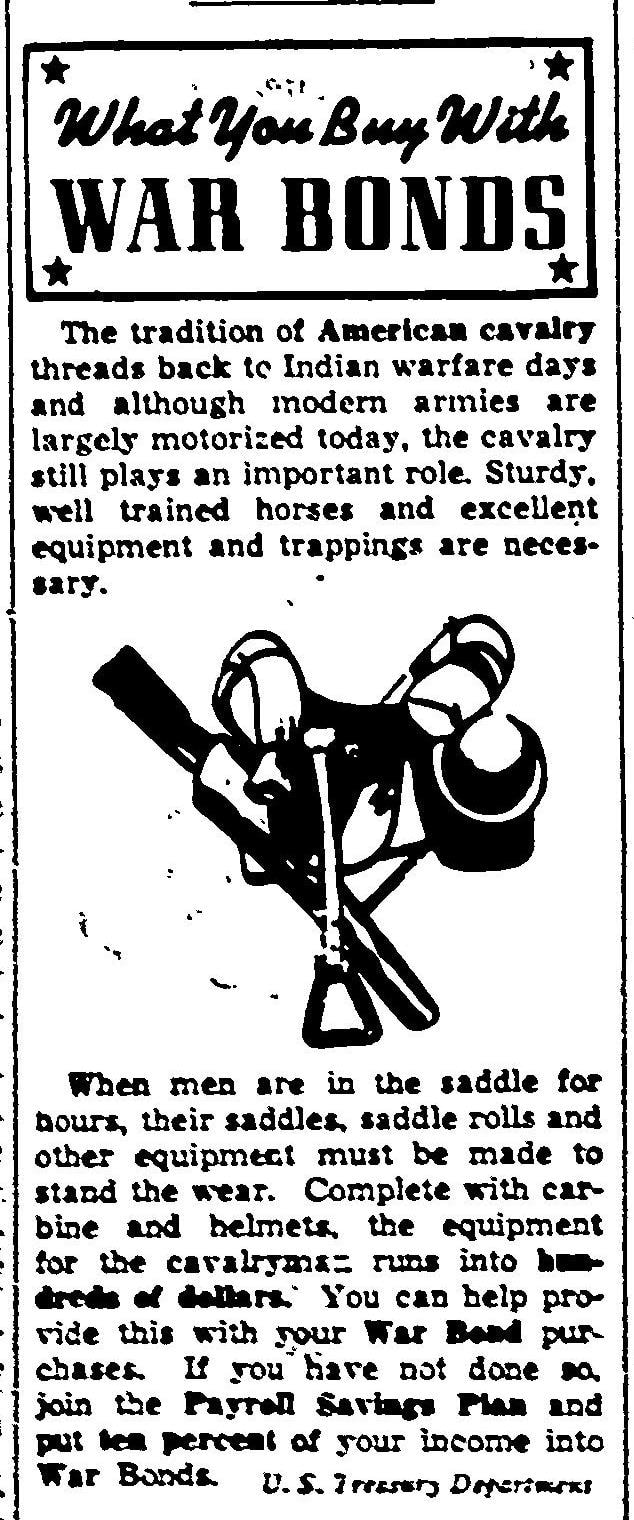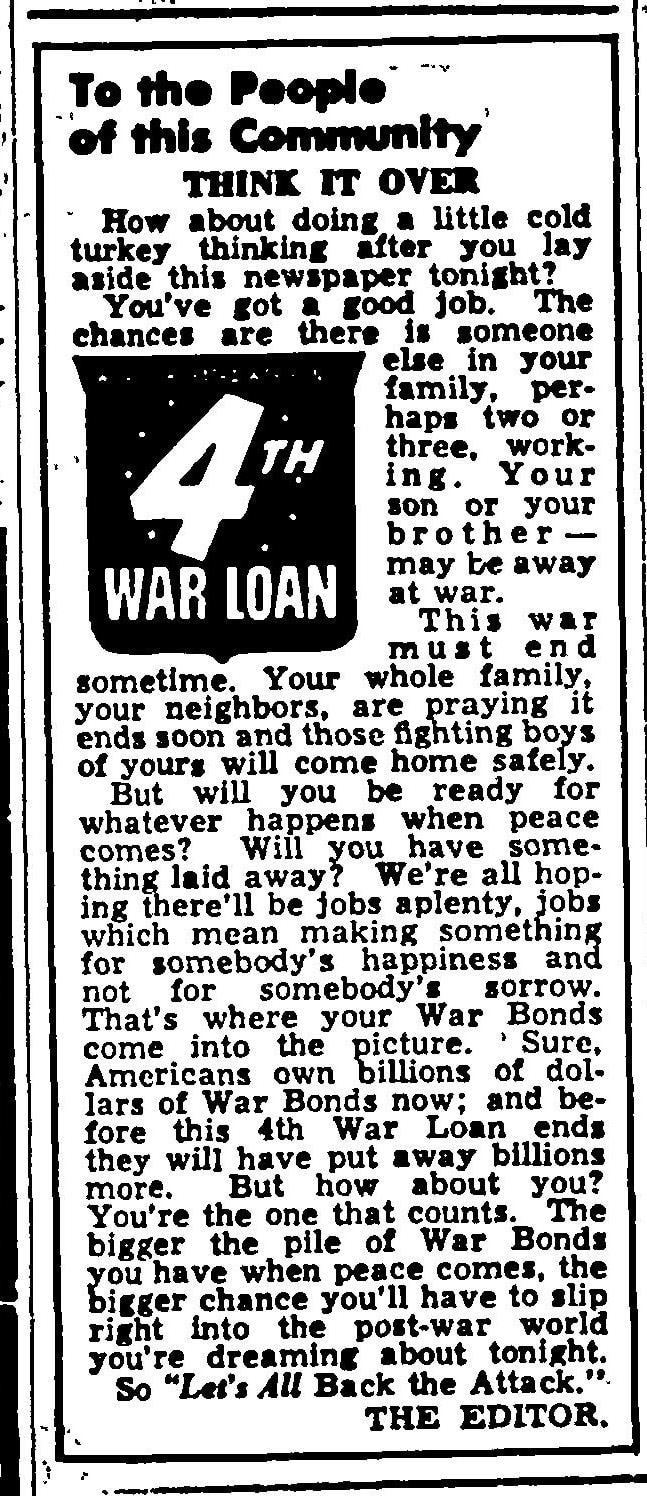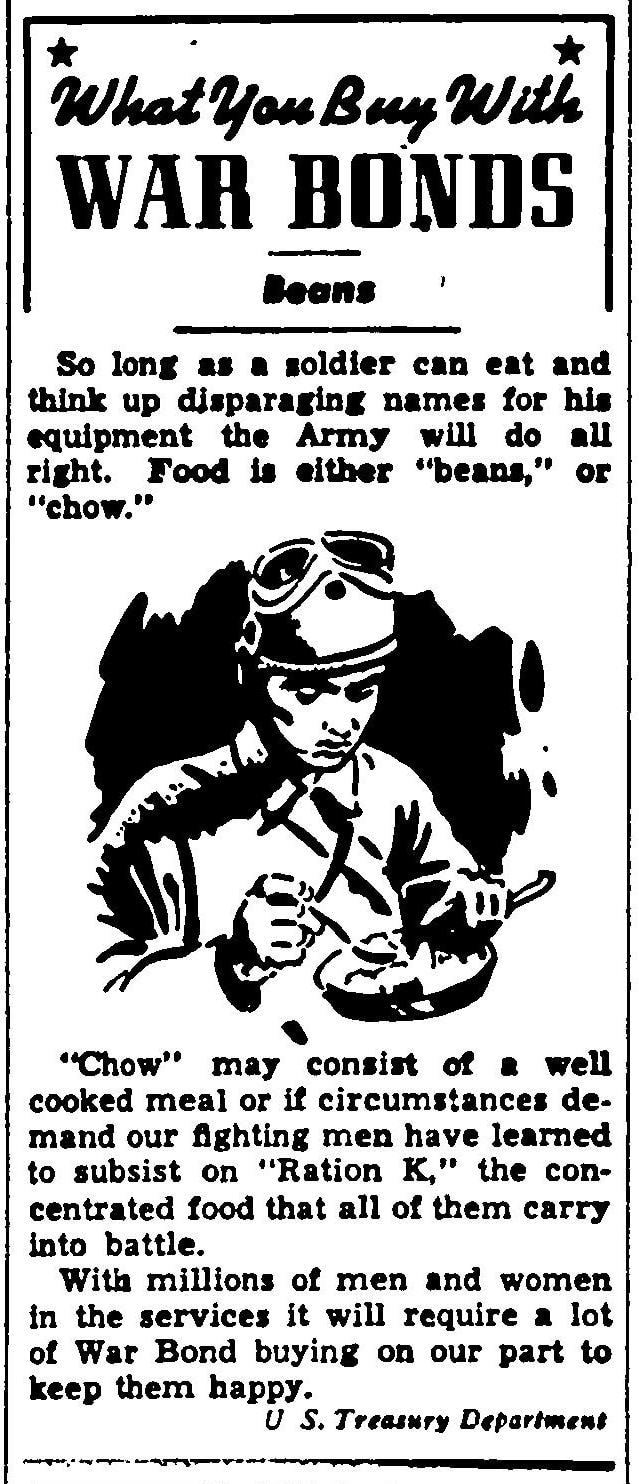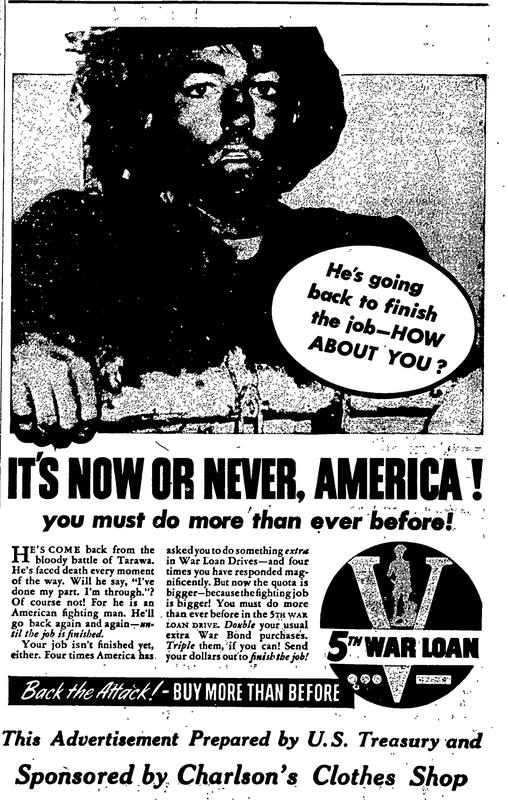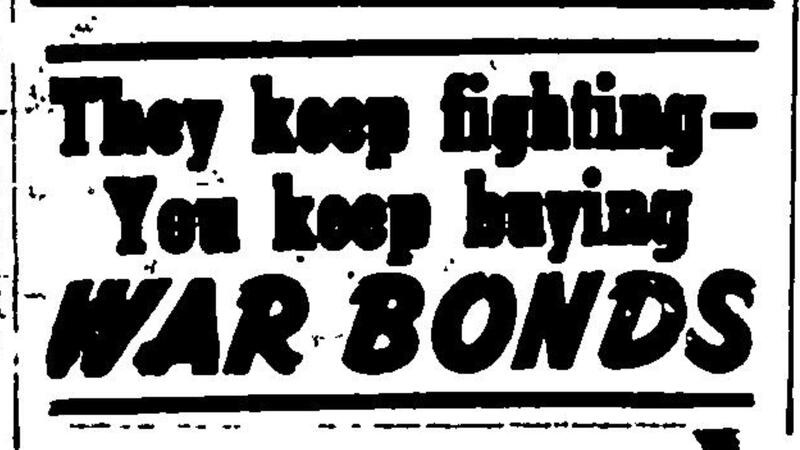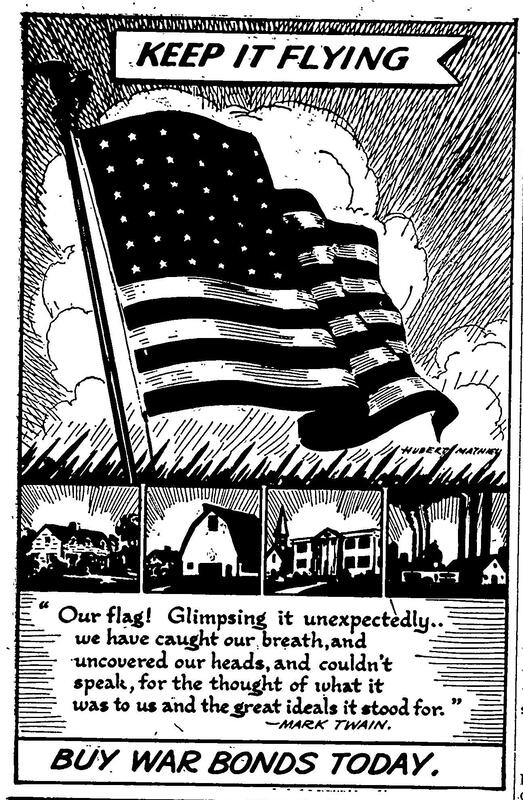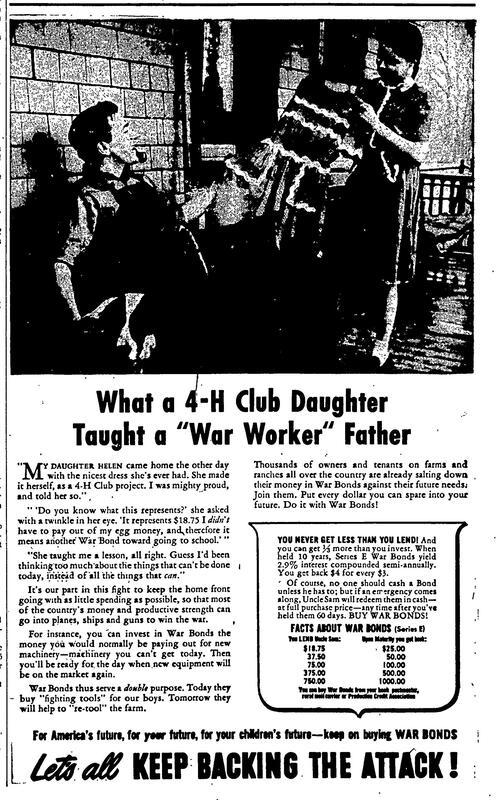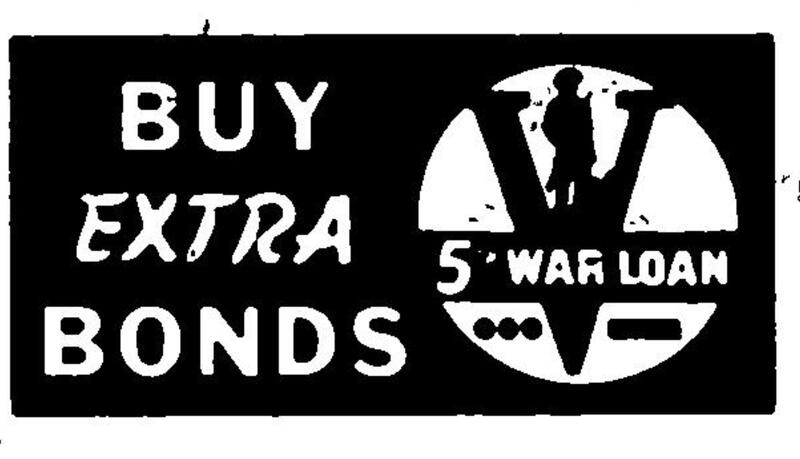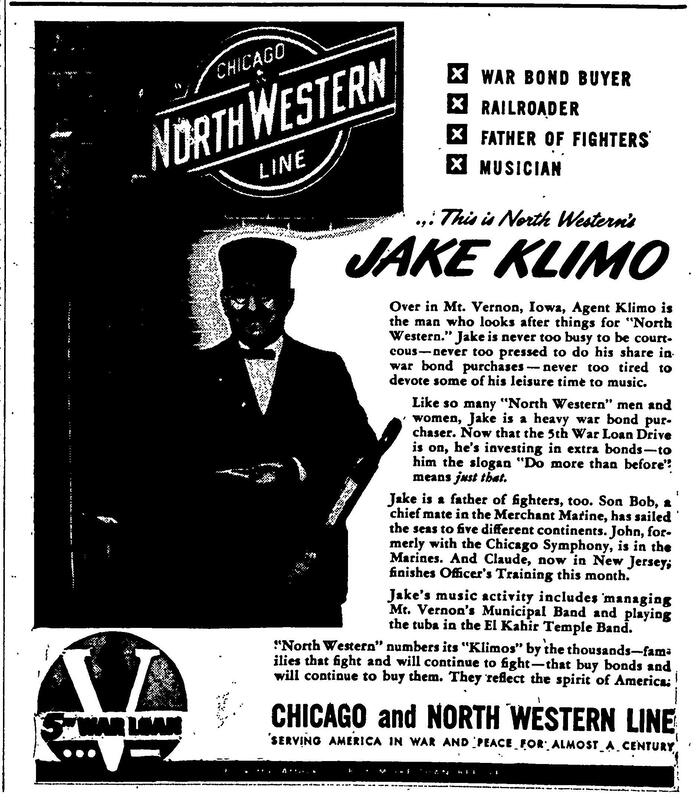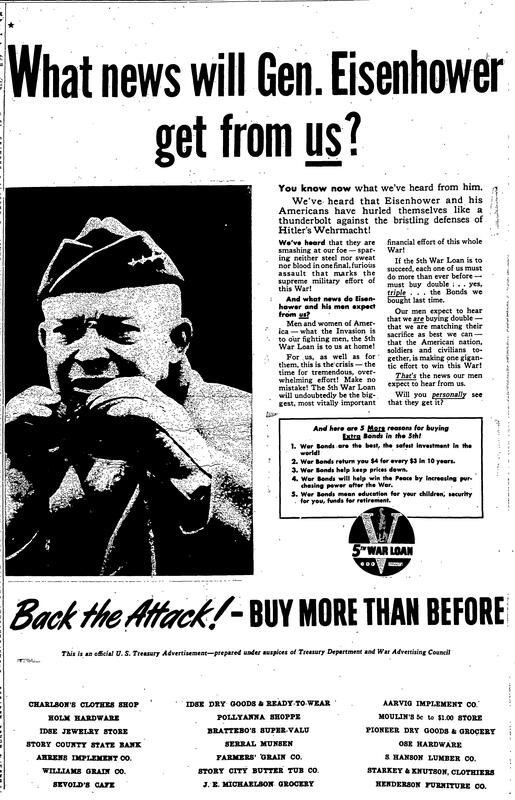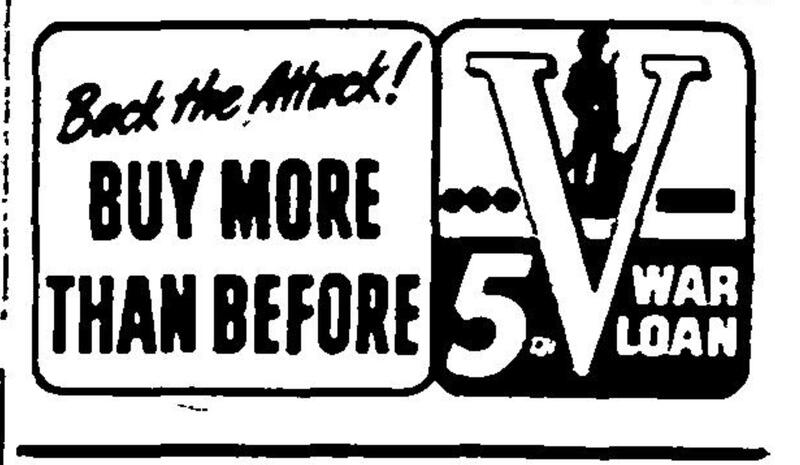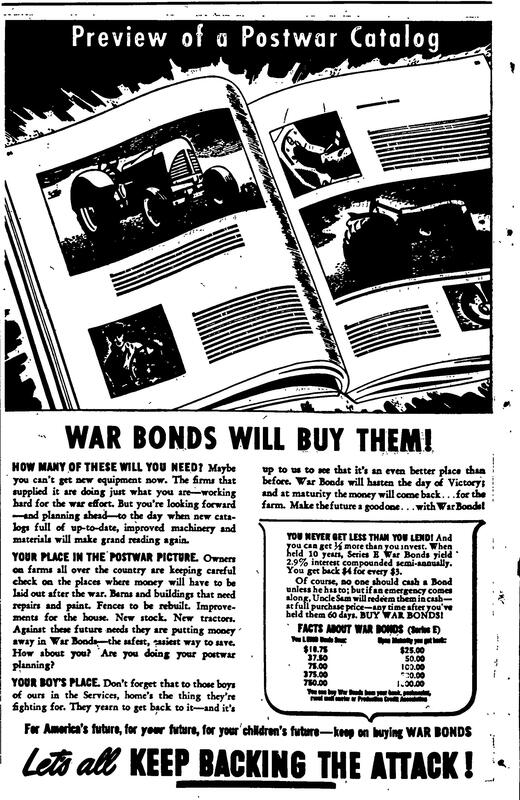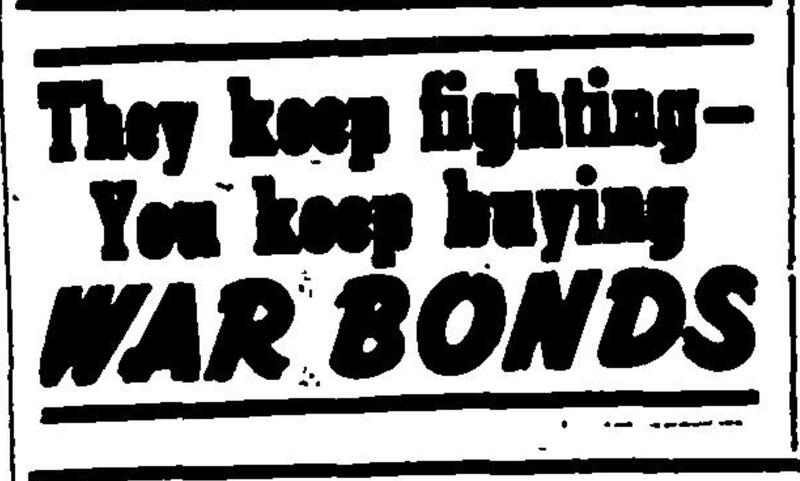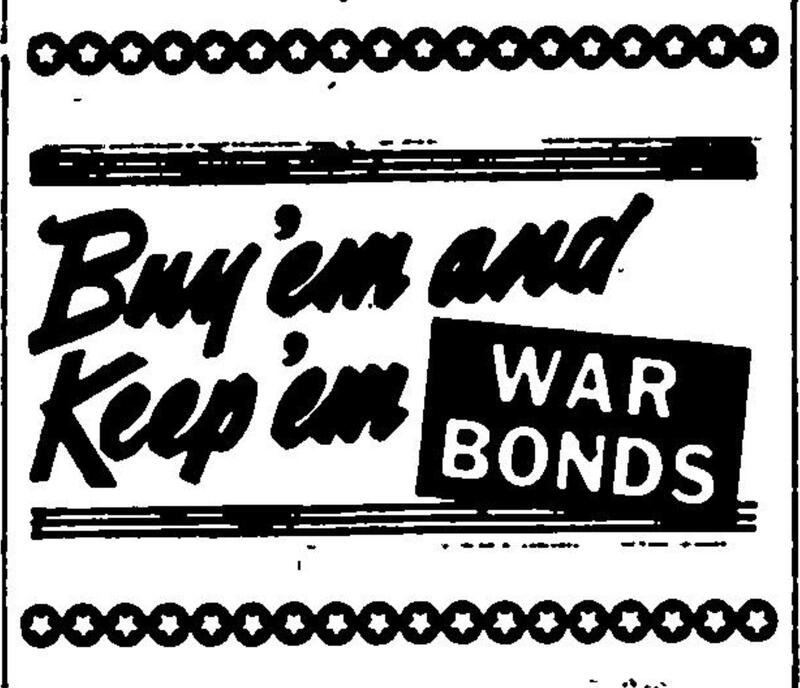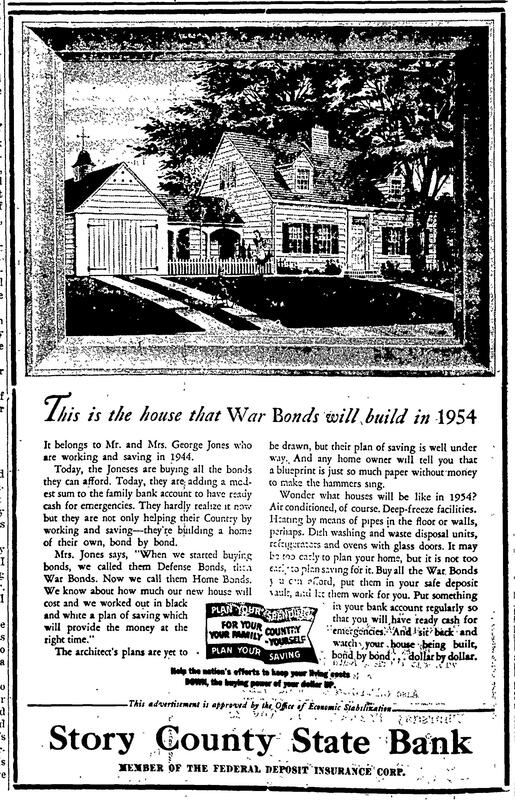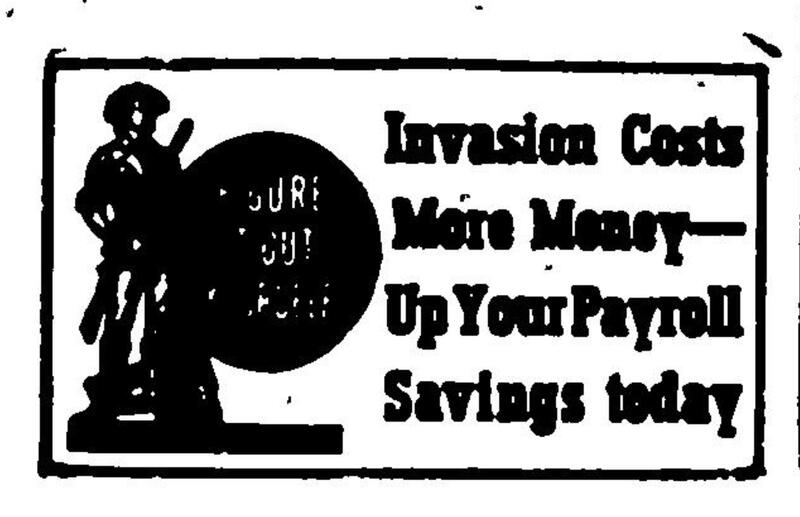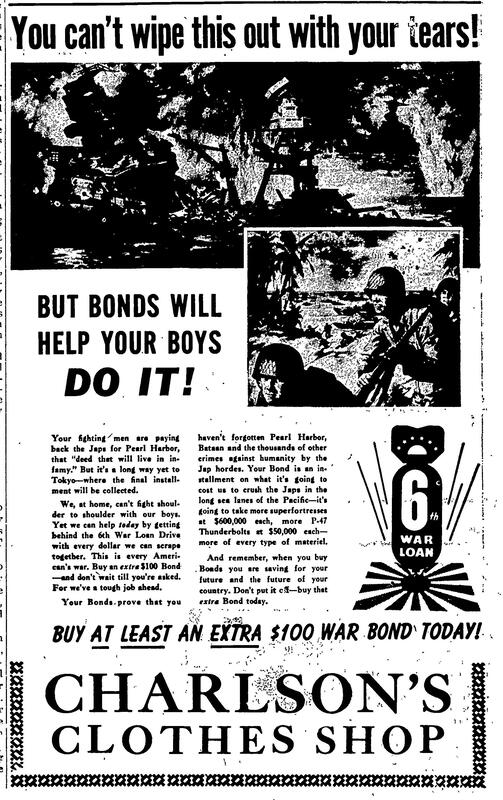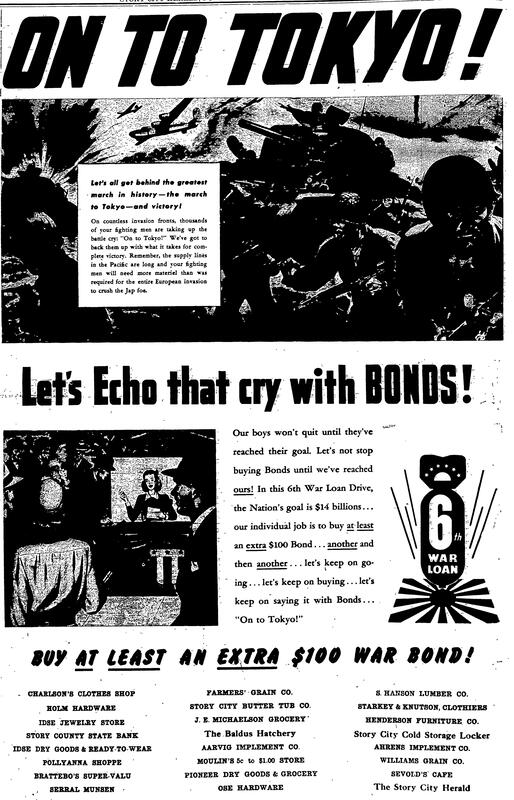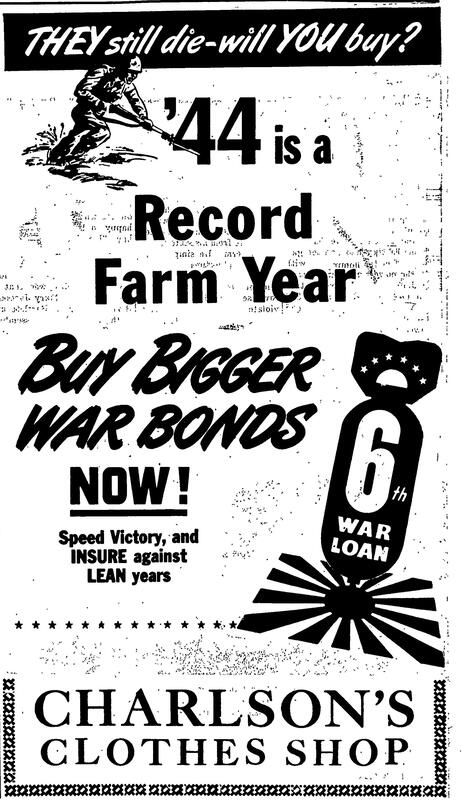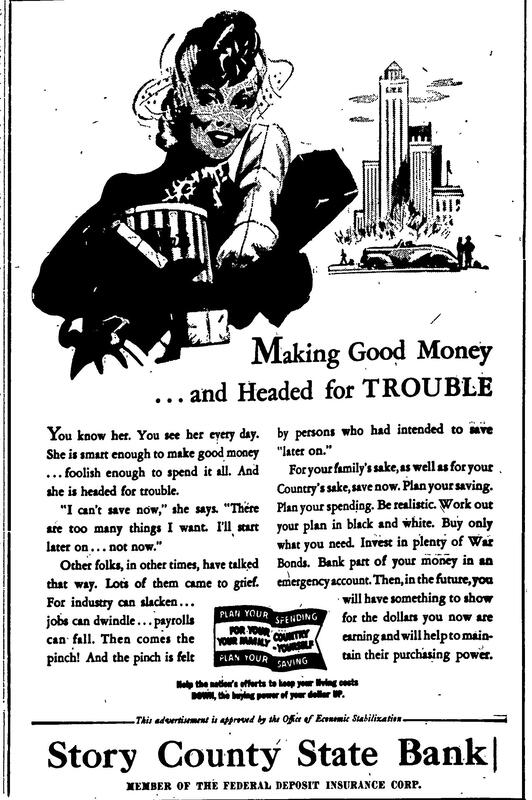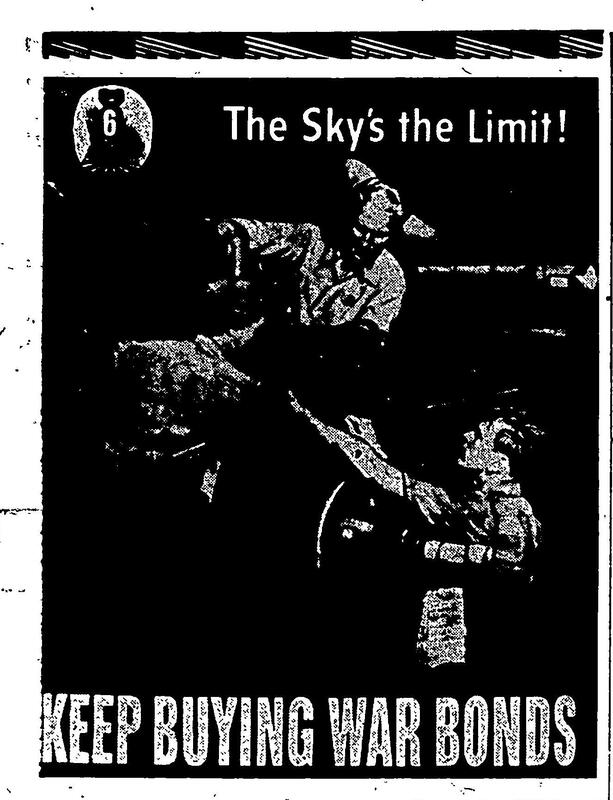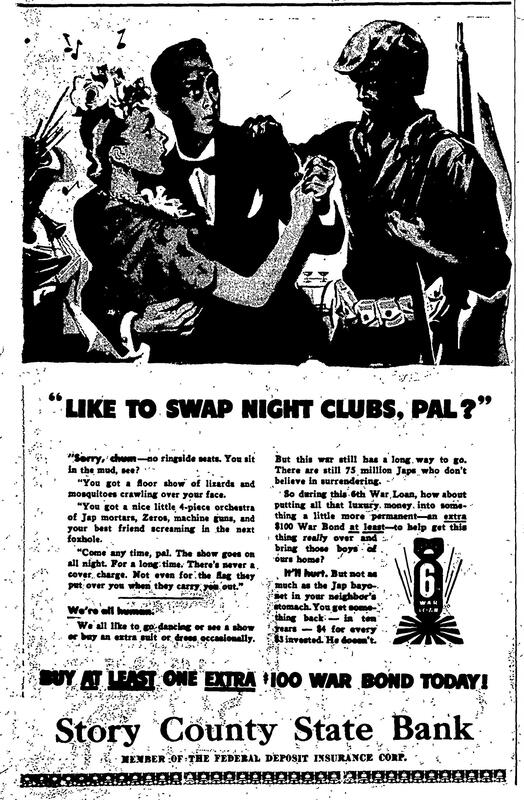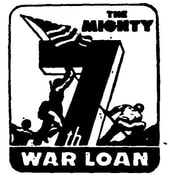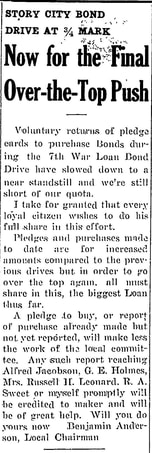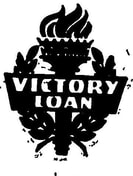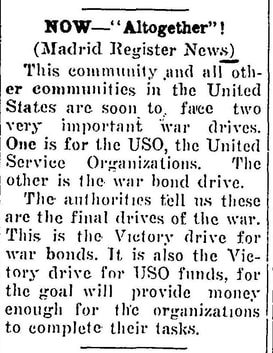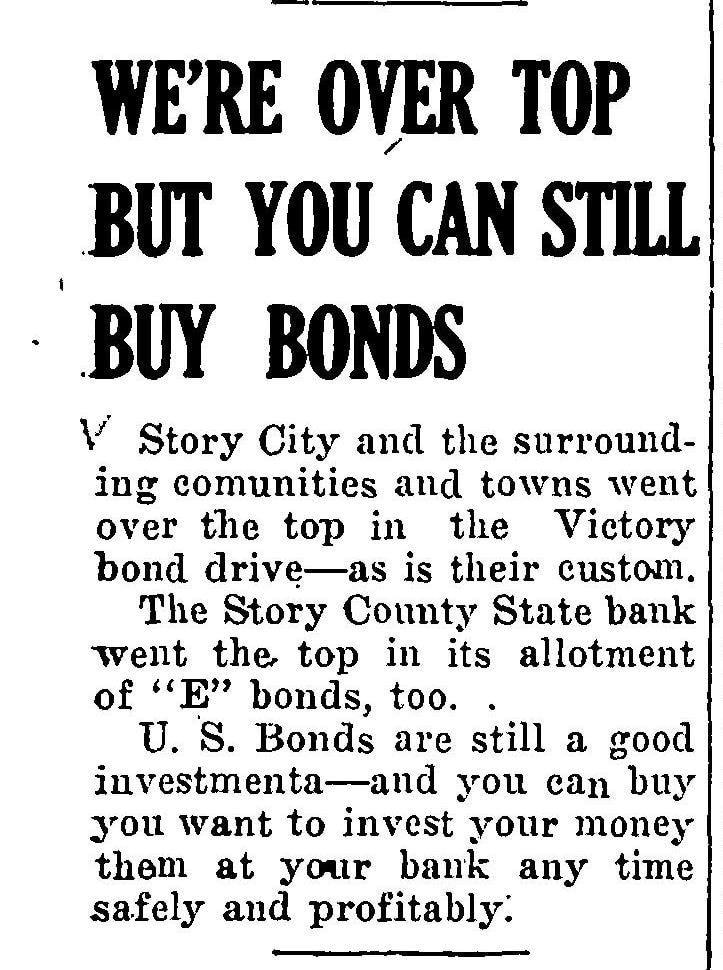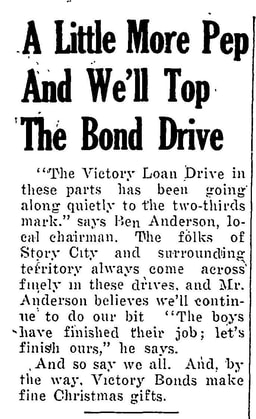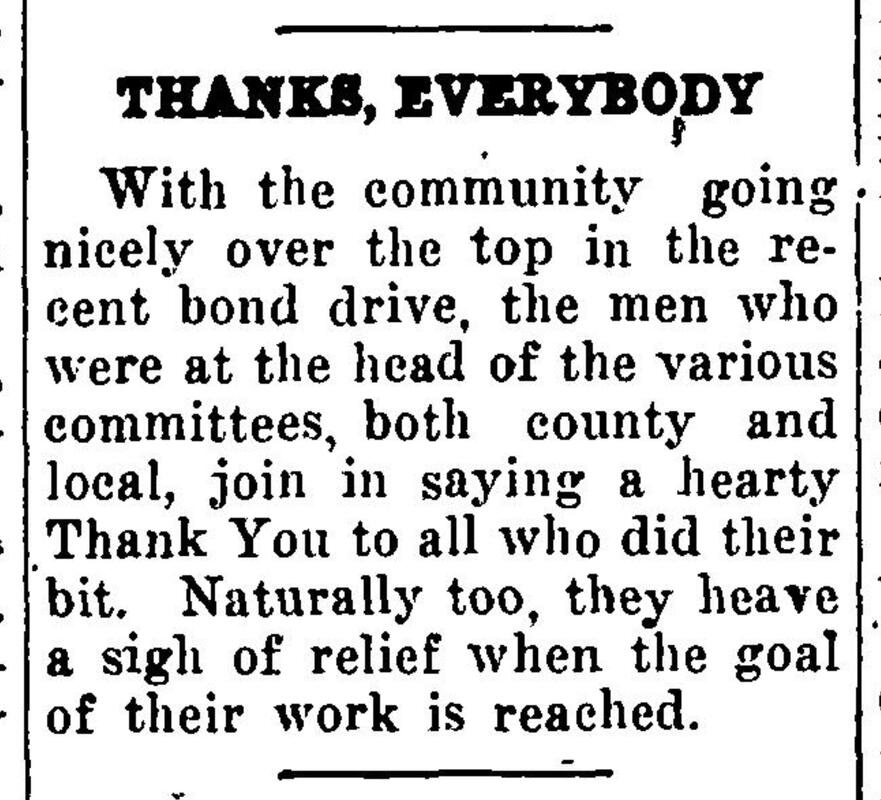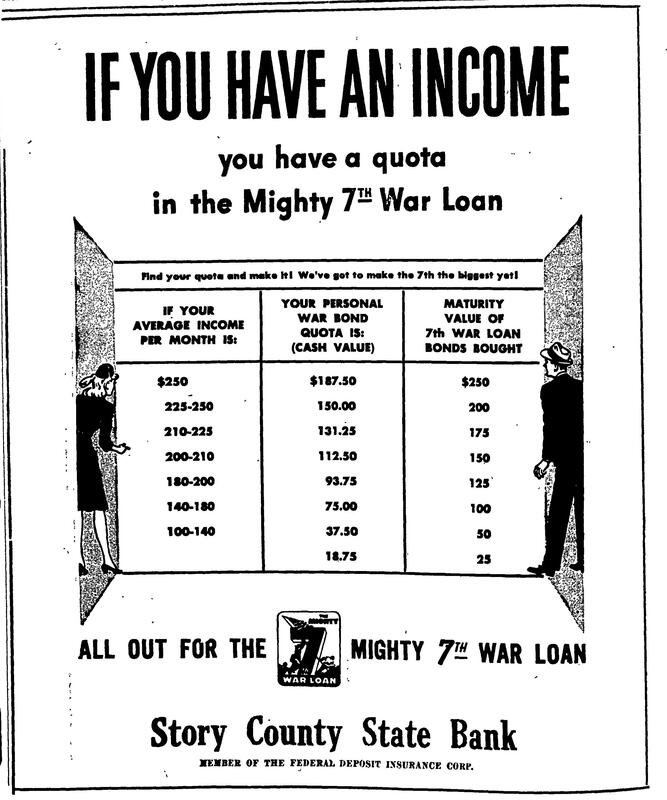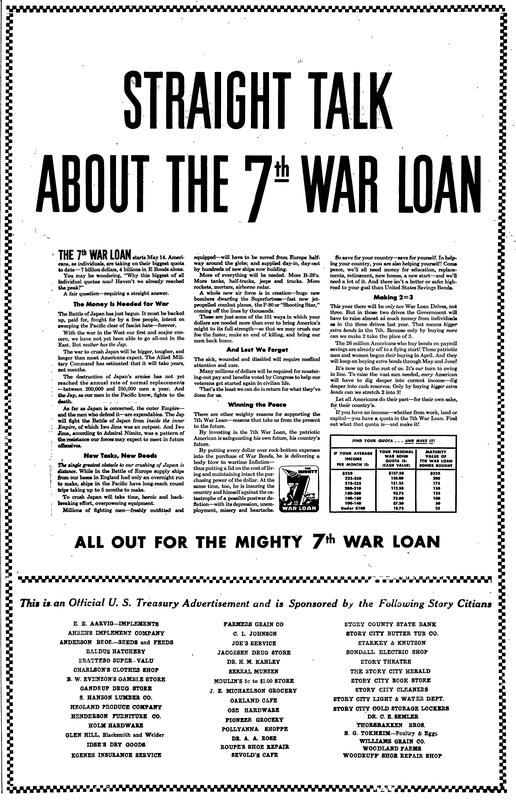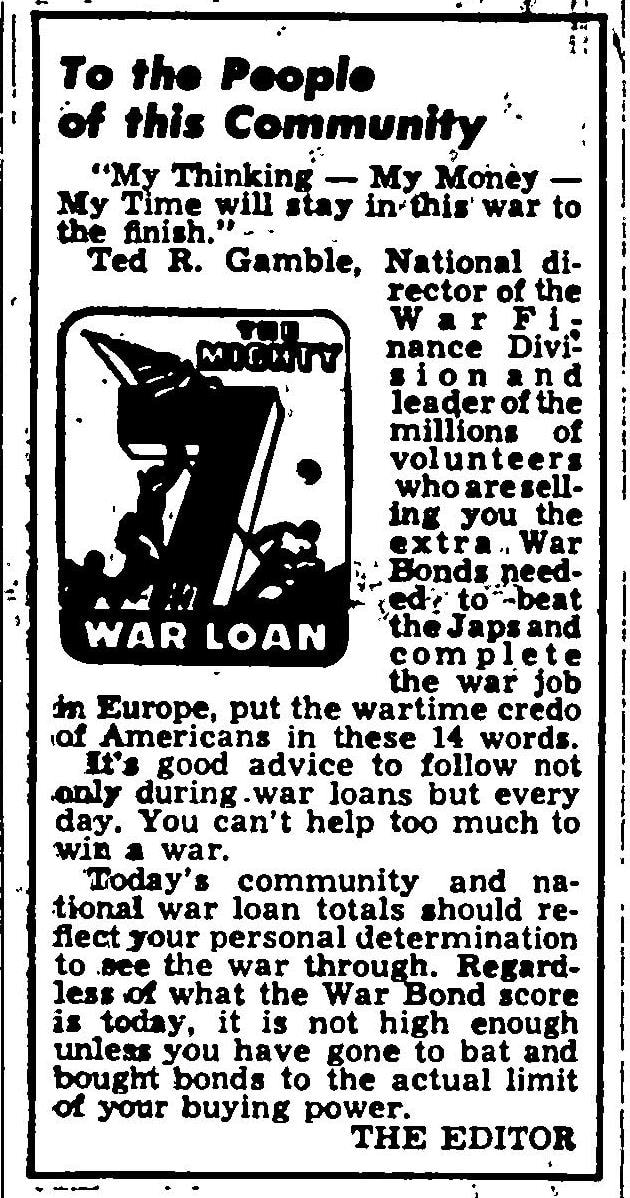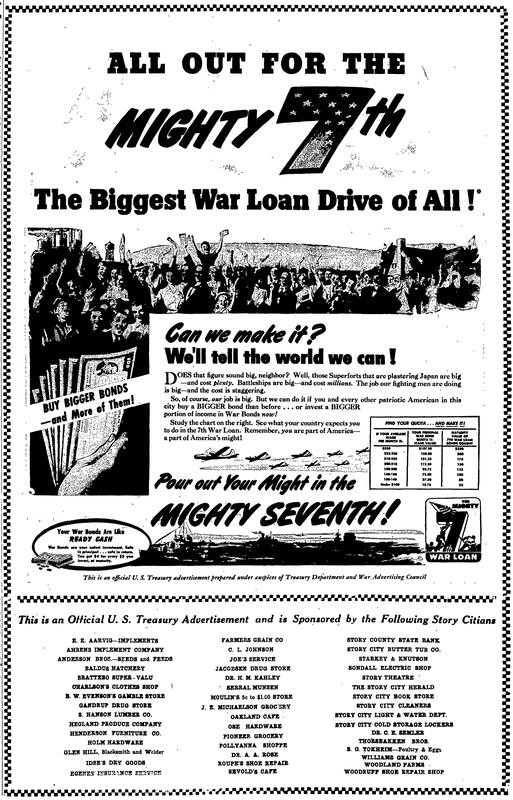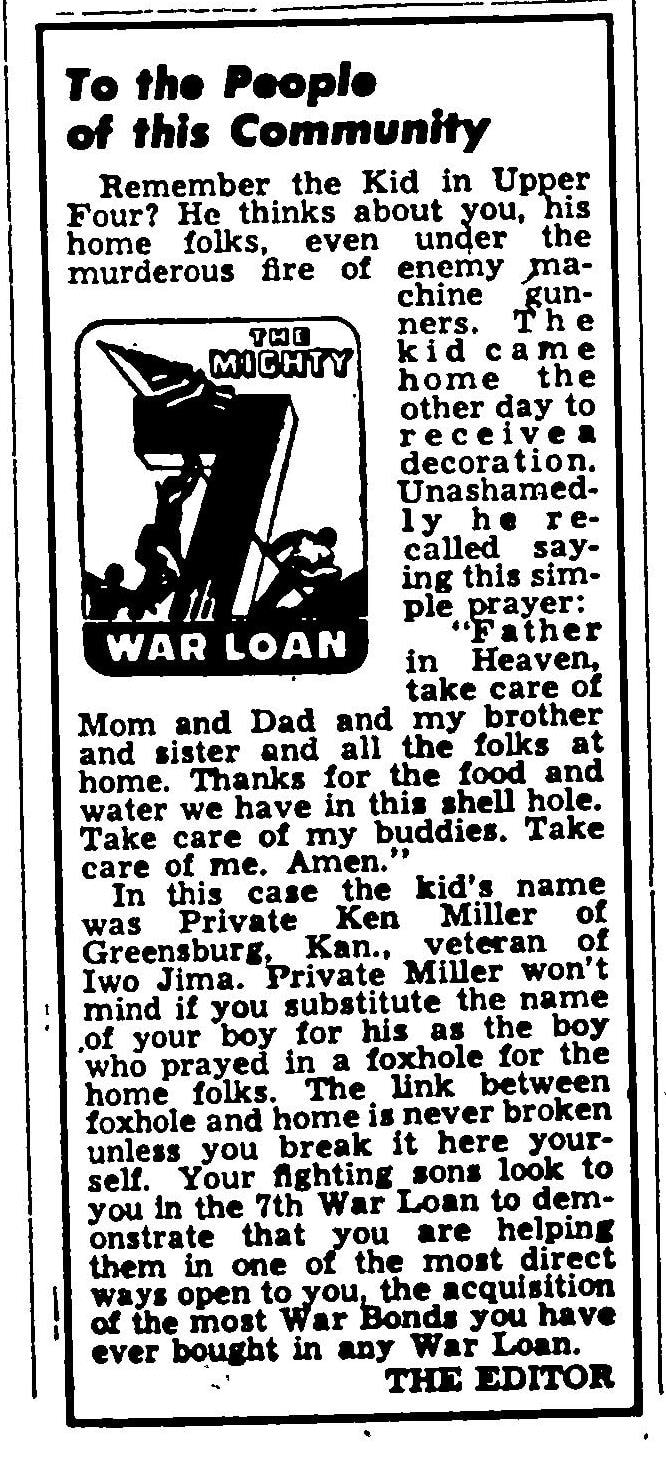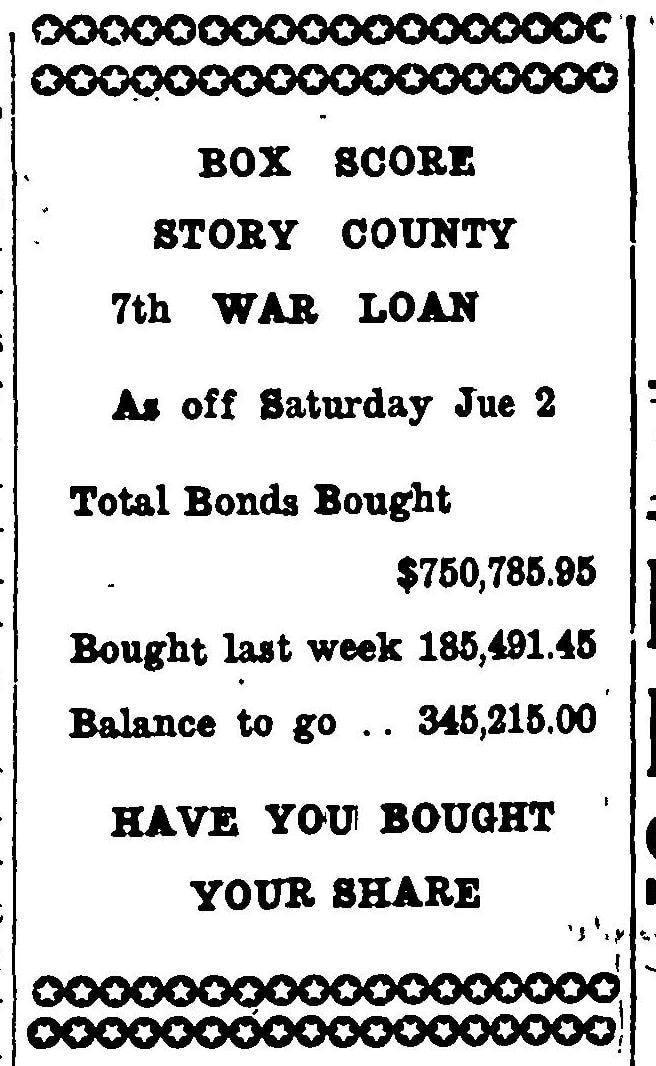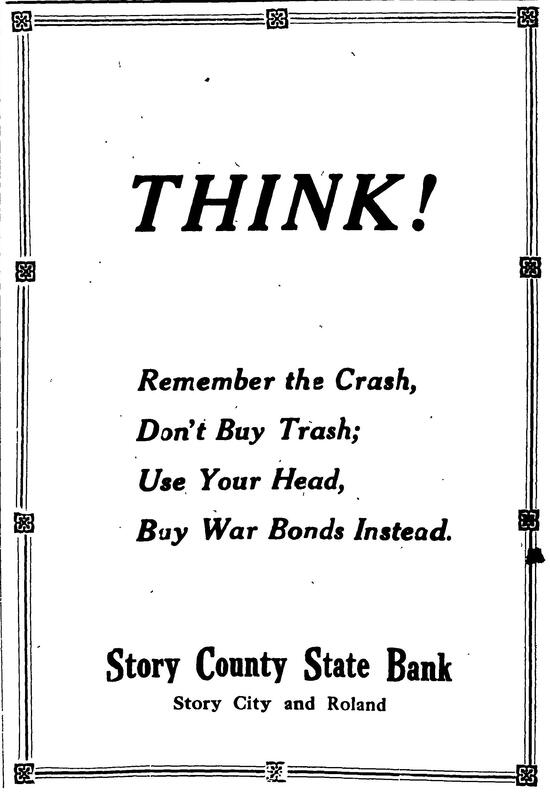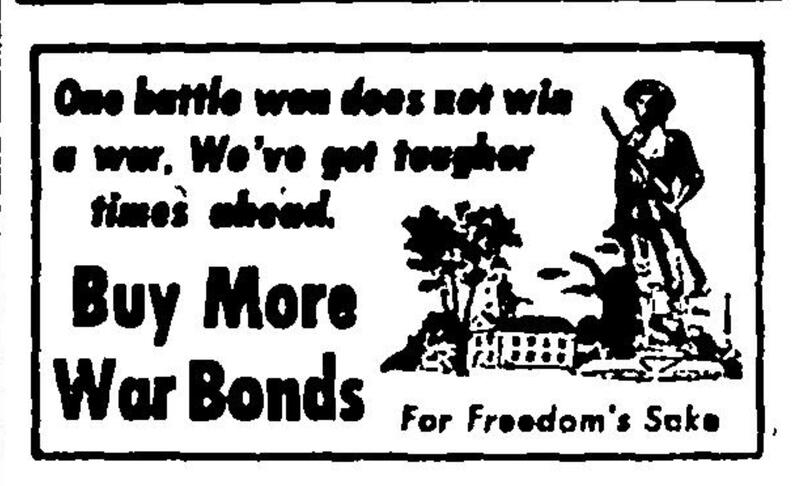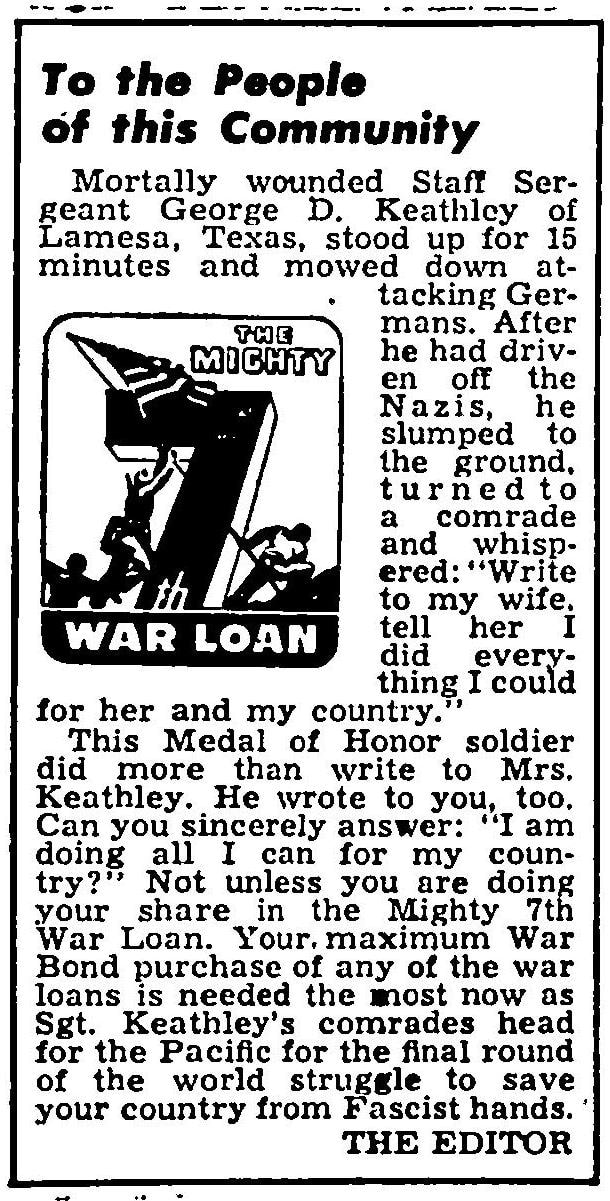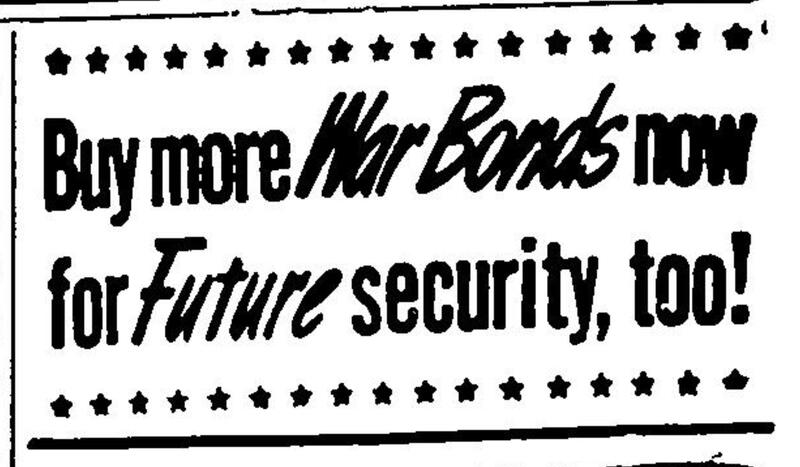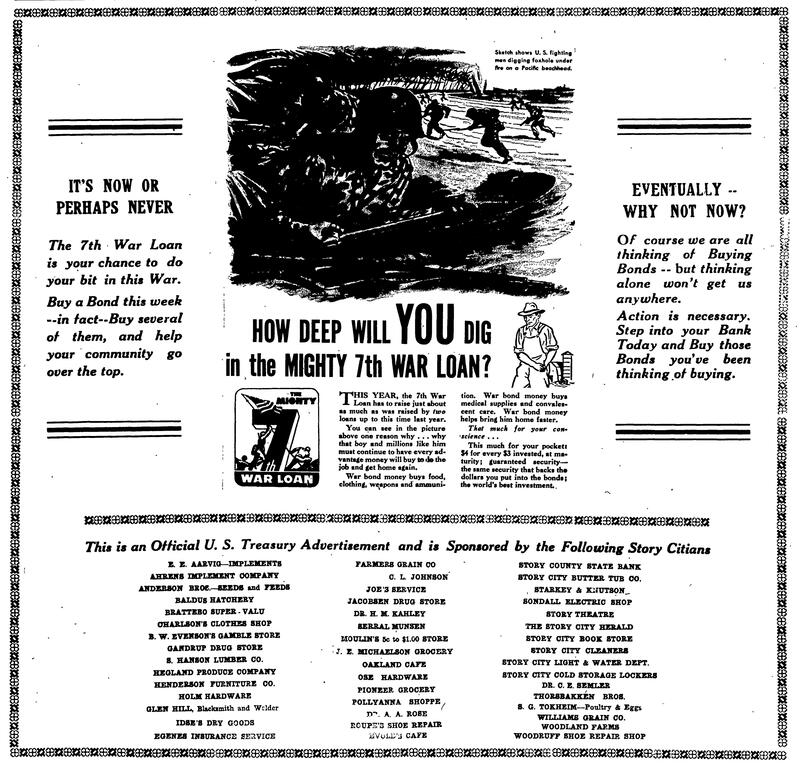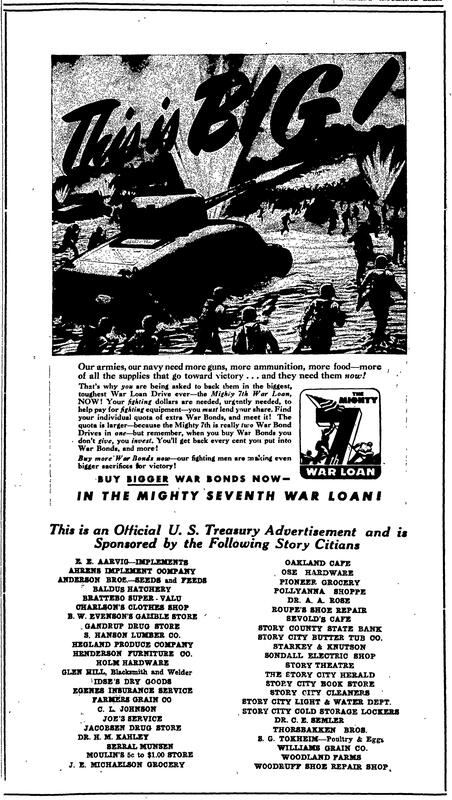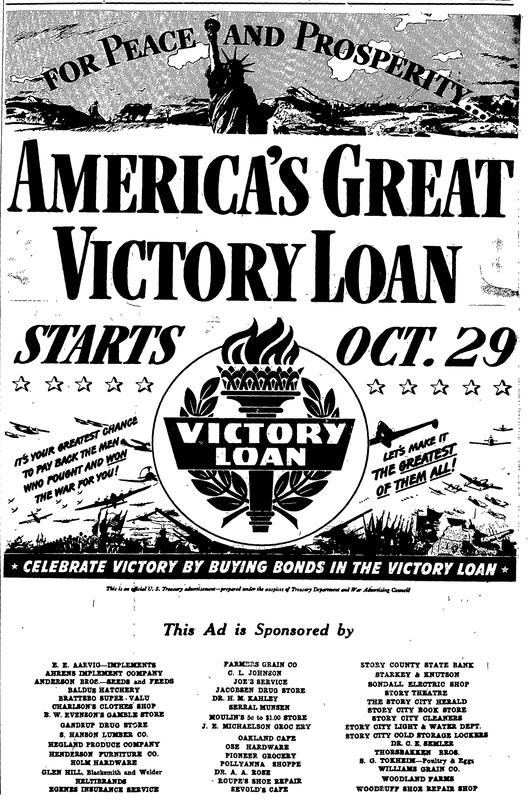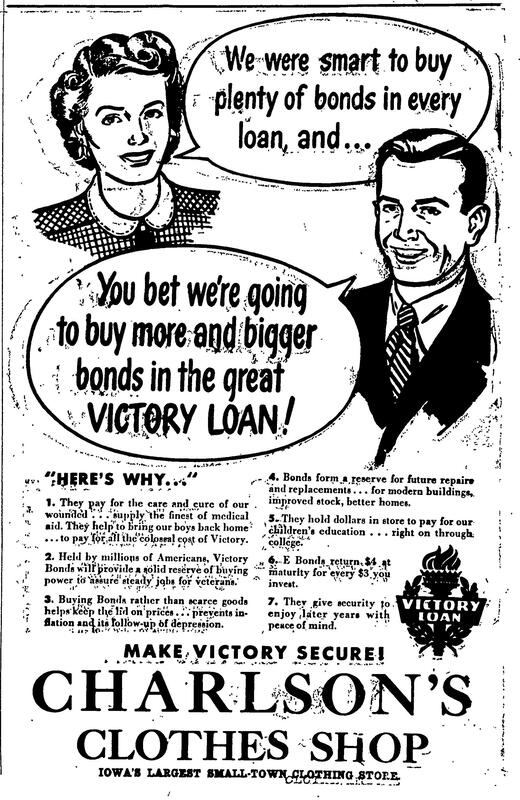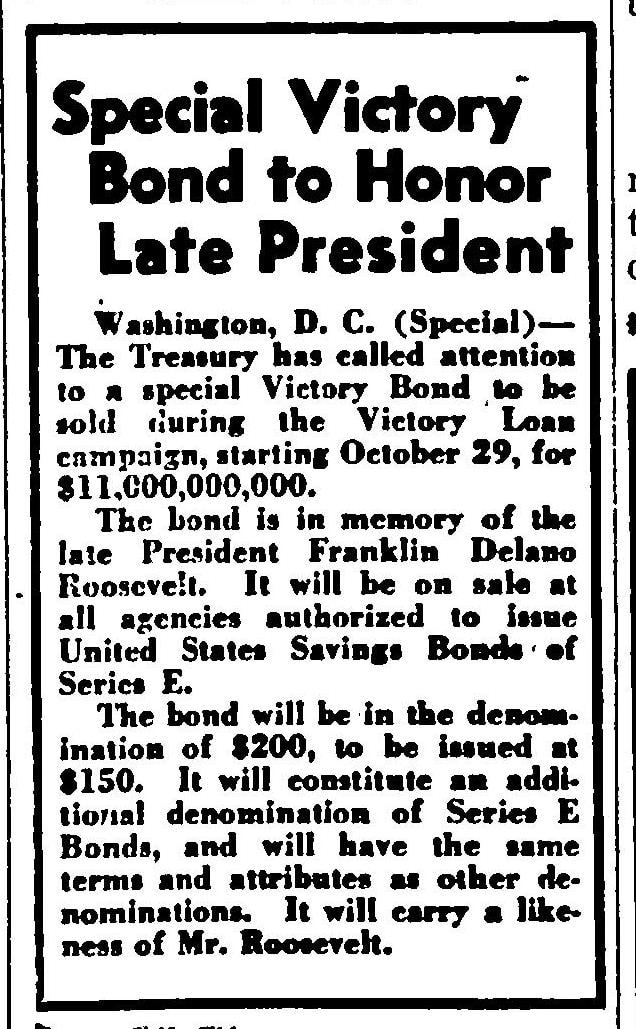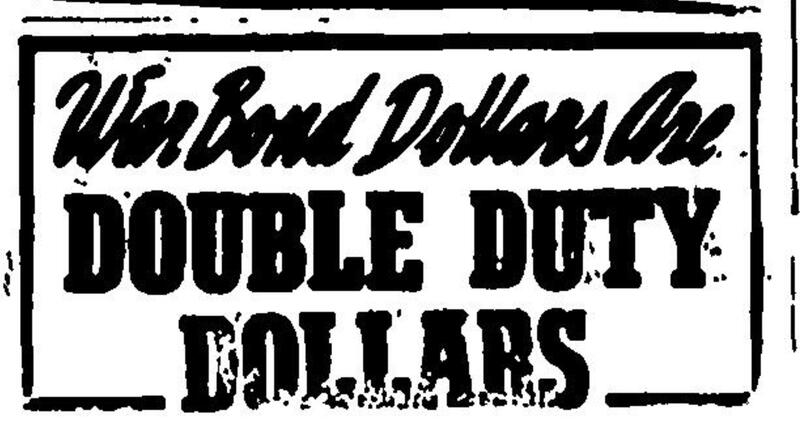War Bonds and Loans During WWII
Over the course of World War II, the United States government spent over $300 billion in both domestic and foreign affairs. In today's currency, this would amount to approximately four trillion dollars! To finance the war, the government turned to its citizens to assist in ensuring that America could win its war. To do this, the War Finance Committee established a series of programs that enabled the public to loan the government funds that would be used in defense. Known as war bonds, the public was asked to put at least 10% of their paychecks into buying bonds from the government. The purpose of these bonds from the perspective of the government was twofold: the government received funds to finance the war, and a significant amount of money would then be taken out of circulation, preventing inflation that would harm the wartime economy. Citizens could buy a $25 war bond for $18.75, or a war stamp for 25¢. In ten years, the bond would reach maturity and could be cashed in for the full amount. Although this was below the market value of currency at the time, buying war bonds was a stable and dependable investment, as well as a way to involve every citizen in the war effort.
Buying war bonds was seen as patriotic, and the War Advertising Council was founded to think of creative ways to keep the public investing in their government and the war effort. The War Advertising Council was responsible for the largest advertising campaign of its time, and their advertisements could be found in both private and public sources. They utilized film, took out ads in newspapers, and worked with celebrities like Bob Hope, Marlene Dietrich, and Frank Sinatra to reach and appeal to the American public's conscience. On May 1, 1941, the first $25 war bond was sold to President Franklin D. Roosevelt, therefore opening up the campaign to the public. Story City was one of many communities who pledged to "do their bit" to help finance the country's war, and were given quotas for the amount of money that they needed to raise, which they did willingly and successfully.
Buying war bonds was seen as patriotic, and the War Advertising Council was founded to think of creative ways to keep the public investing in their government and the war effort. The War Advertising Council was responsible for the largest advertising campaign of its time, and their advertisements could be found in both private and public sources. They utilized film, took out ads in newspapers, and worked with celebrities like Bob Hope, Marlene Dietrich, and Frank Sinatra to reach and appeal to the American public's conscience. On May 1, 1941, the first $25 war bond was sold to President Franklin D. Roosevelt, therefore opening up the campaign to the public. Story City was one of many communities who pledged to "do their bit" to help finance the country's war, and were given quotas for the amount of money that they needed to raise, which they did willingly and successfully.
Although citizens were encouraged to buy war bonds year-round, there were certain weeks of the year where nationwide war loan drives took place. Over the course of the war, there were eight war loan drives. The First War Loan started on November 30, 1942, and ended on December 23, 1942. Nationwide, the citizens bought $13 million fworth of bonds. In Story City, both individual citizens and clubs made contributions. The Story City Community School District also got involved with the "Schools at War" program, which aimed at teaching children financial responsibility and community service through buying bonds.
|
The Second War Loan drive began on April 12, 1943, and lasted until May 1, 1943. Over the the three weeks, $18.5 billion was raised nationwide. Story County was tasked with raising $1,040,000 for the drive. The widespread success of this loan drive was partially due to the donation of advertising space by local and nationwide newspapers throughout the United States, in which The Story City Herald participated.
|
|
Later in the year, the Third War Loan Drive was held between September 9 and October 2. United States citizens bought $19 billion worth of war bonds. Story City was expected to raise 62,160 dollars, but ended up raising over 63,000 dollars. Story county oversubscribed their goal of $1,554,000 by 40%, instead selling $2,219,392 in bonds.
|
1943 War Bond Advertisements in the Story City Herald
|
The Fourth War Loan Drive kicked off the year 1944, lasting from January 18 until February 15. Nationwide, $16.7 billion were raised. On January 22, a benefit was held in Story City where citizens could buy items in a rummage sale or eat at a pancake lunch. Through the benefit, over $300 were raised.
|
|
The Fifth War Loan Drive took place between June 12 and July 8, 1944, raising a record $20.6 billion nationwide. Story City's quota was 70,000 dollars, and was easily met by the members of the community. The Story City Theater held a "Bond Show" on July 6, where patrons had to buy a war bond to gain entry to the movie, which was "Chip Off the Old Block".
|
|
The Sixth War Loan Drive began on November 2 and lasted until December 16, 1944. $21.6 billion were raised nationwide, and Story County was tasked with buying $1,624,000 worth of bonds. Once again, the Story City Theater participated by granting free entry to those who had purchased bonds.
|
1944 War Bond Advertisements in the Story City Herald
|
In the final year of the war, 1945, two War Loan Drives were held. The Seventh War Loan Drive lasted from May 14 through June 30, immediately following the victory in Europe. War bond officials were concerned that bonds would be more difficult to sell given the recent victory, but Americans bought a total of 26 billion dollars, the highest amount yet.
|
|
The eighth and final drive, known as the Victory War Loan Drive, took place from October 29th until December 8th. The goal had been to raise 11 billion dollars, but over $21 billion ended up being raised. For the final time, the Story City community hit their fundraising goal, and then some.
|
1945 War Bond Advertisements in the Story City Herald
Sources
Duke University Library. Brief History of World War Two Advertising Campaigns: War Loans and Bonds, https://library.duke.edu/specialcollections/scriptorium/adaccess/warbonds.html.
National World War II Museum. Take A Closer Look At War Bonds, http://enroll.nationalww2museum.org/learn/education/for-students/ww2-history/take-a-closer-look/war-bonds.html.
Story City Herald Newspaper, available through the Digital Archives of the Bertha Bartlett Public Library. Retrieved from http://berthabartlett.advantage-preservation.com/
Duke University Library. Brief History of World War Two Advertising Campaigns: War Loans and Bonds, https://library.duke.edu/specialcollections/scriptorium/adaccess/warbonds.html.
National World War II Museum. Take A Closer Look At War Bonds, http://enroll.nationalww2museum.org/learn/education/for-students/ww2-history/take-a-closer-look/war-bonds.html.
Story City Herald Newspaper, available through the Digital Archives of the Bertha Bartlett Public Library. Retrieved from http://berthabartlett.advantage-preservation.com/
